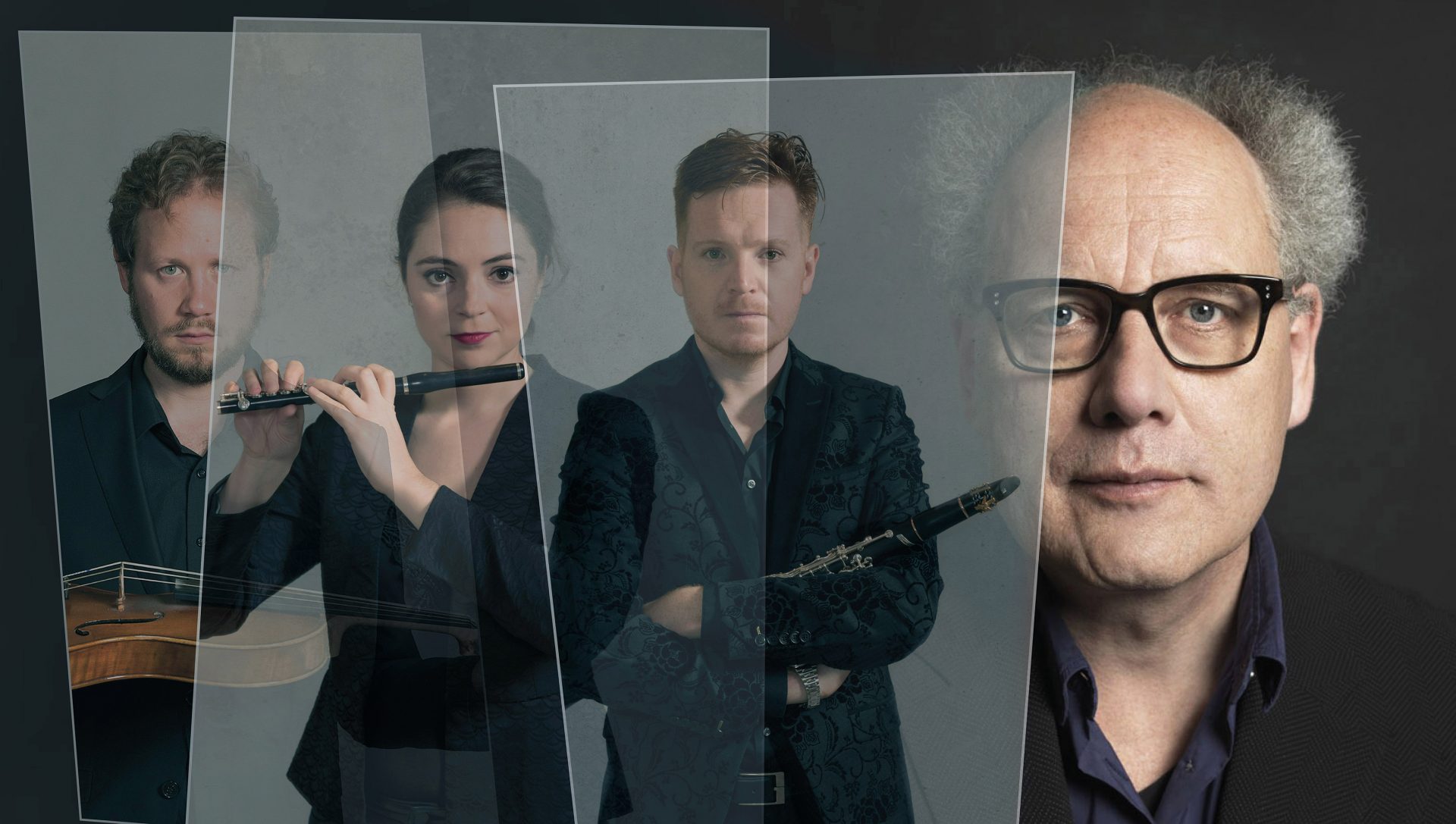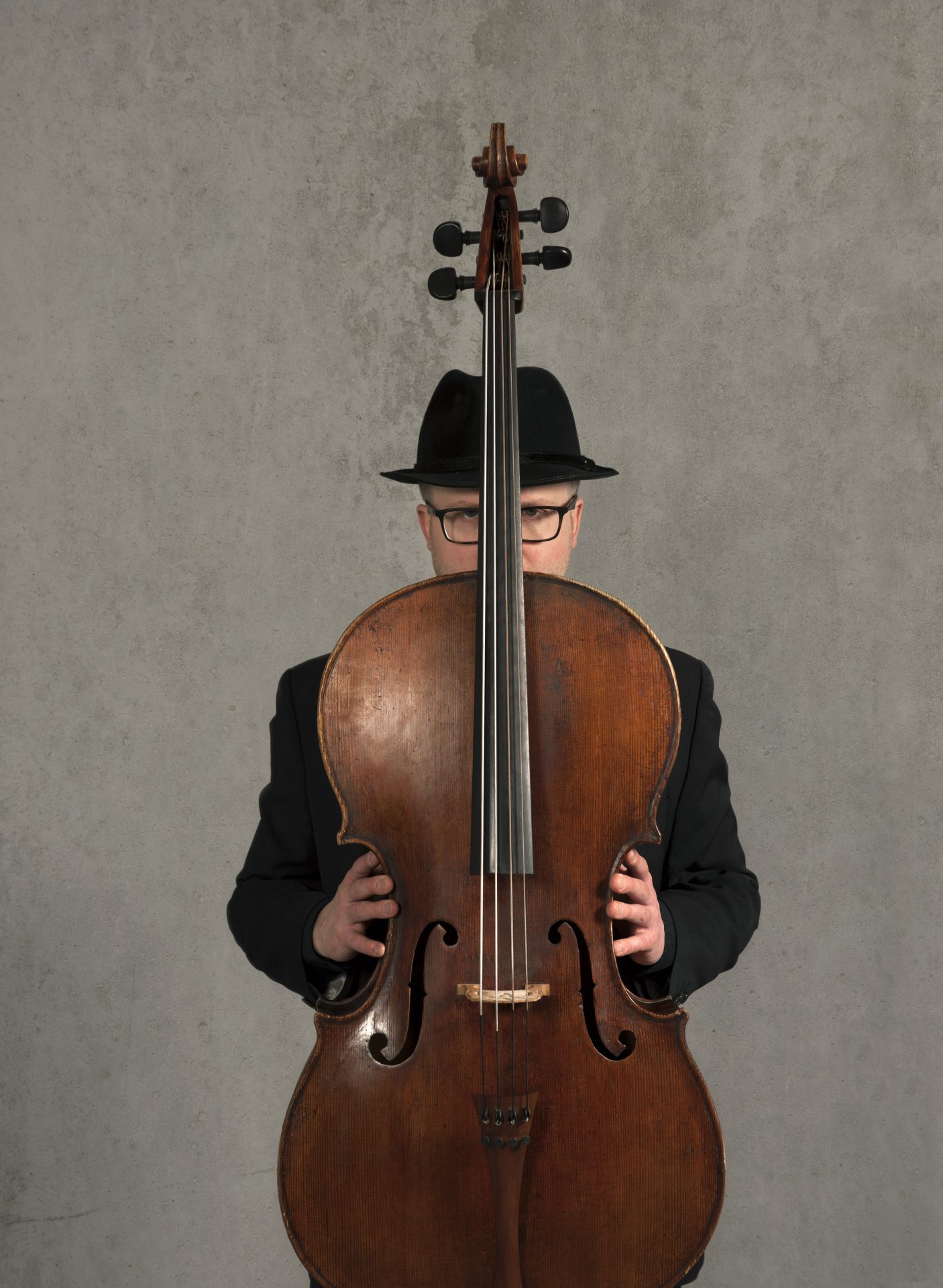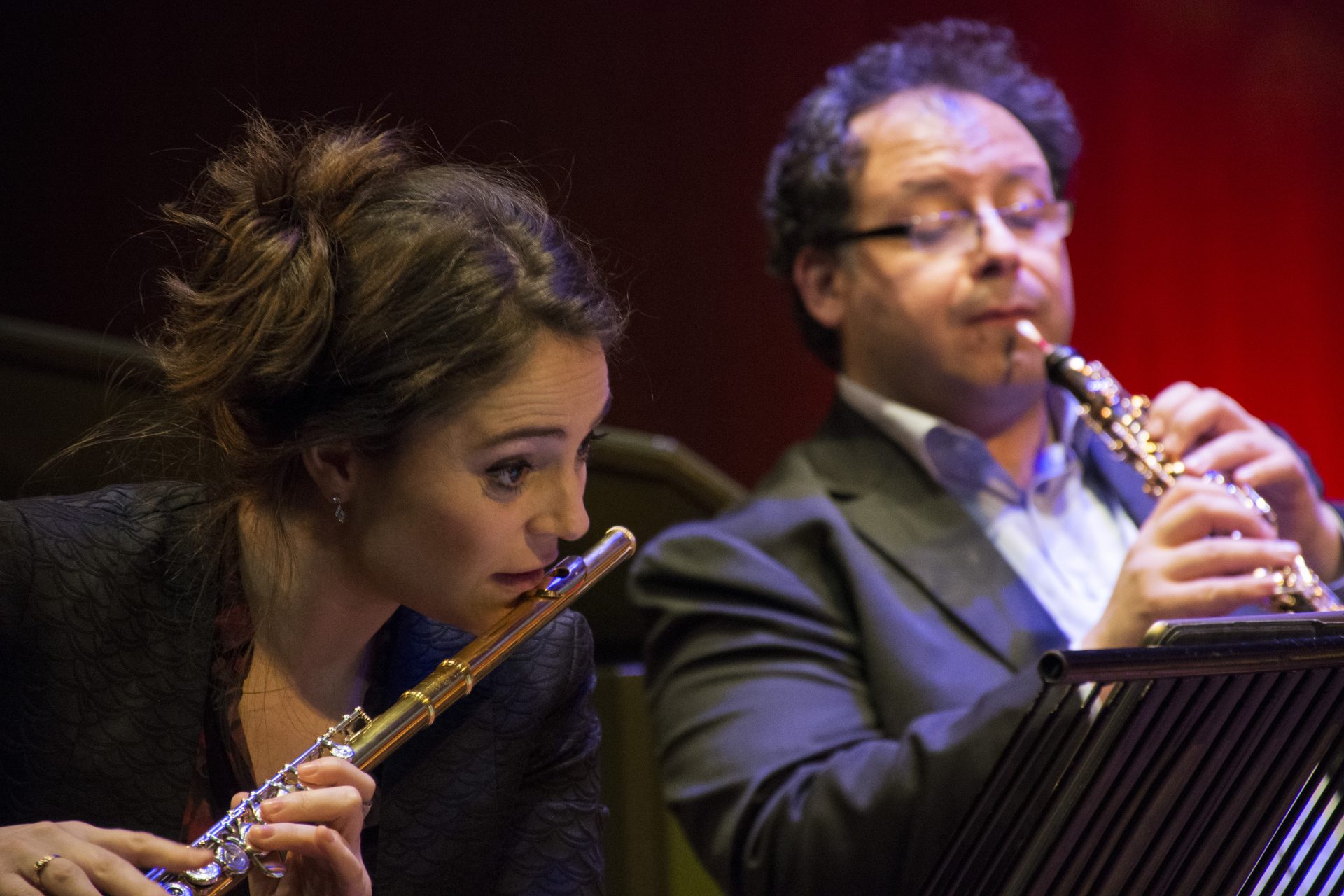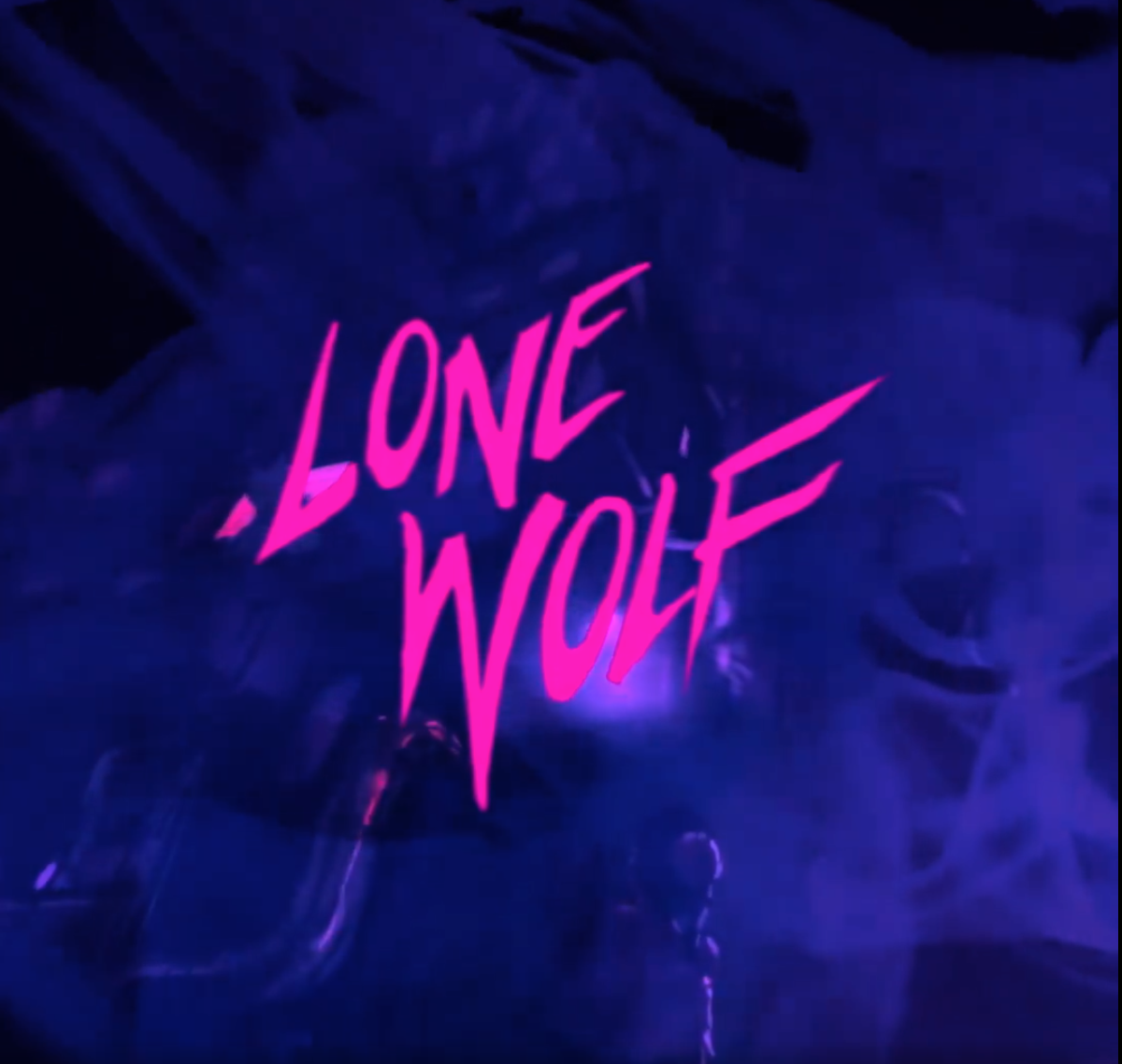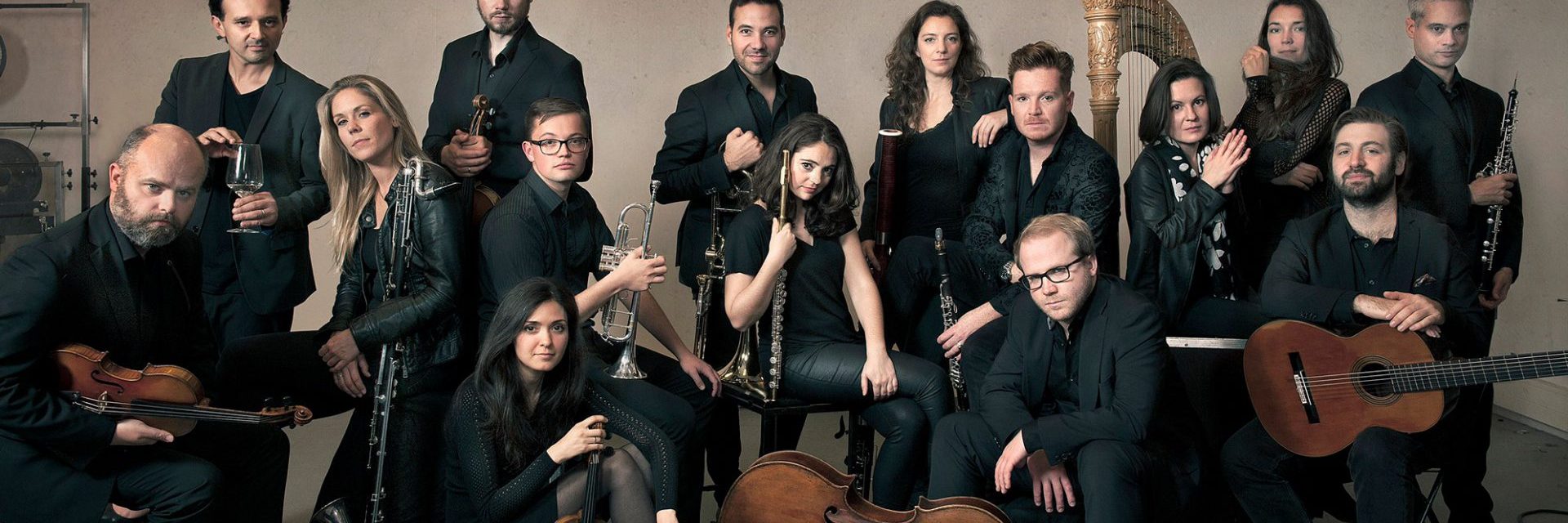
New European Ensemble
Archive page
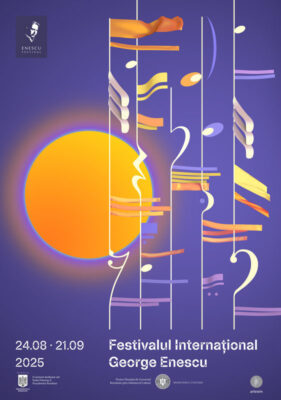
VLAD MAISTOROVICI conductor, violin
Vlad Maistorovici Metamorphosis after M. C. Escher
Michel van der Aa Shades of Red
Dan Dediu Hyperkardia II Op. 139
Mark-Anthony Turnage Romanian Rhapsody
George Enescu Chamber Symphony for 12 Solo Instruments Op. 33
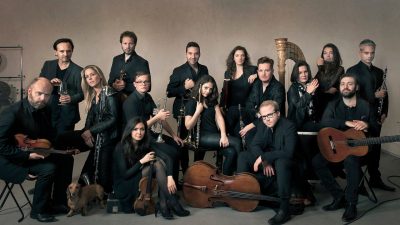
With nostalgic and playful works by Tjøgersen, Cendo, Black, Ballie and a creation by young Quebec composer Francis Battah (commissioned by the SMCQ).
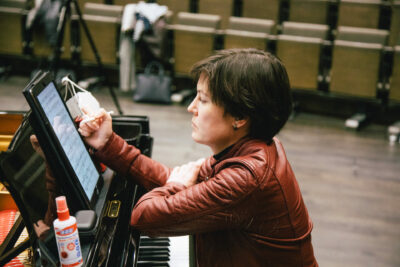
In the concert series ‘Dwarsliggers’, New European Ensemble presents the stories of composers who go against the current. In ‘When I Listen’, discover the powerful compositions of Julius Eastman (1940-1990), imbued with political meaning and inspired by his experience as a gay, African-American artist. During this concert you will experience what he himself called organic music.
Author Glenn Helberg provides his insights into the complexity and diversity of our existence. There will also be new music by Jalalu-Kalvert Nelson; the African-American composer with roots in Oklahoma who found a home in Switzerland, explores the deep connection with African-American culture through his music.
Program
Derrick Skye – American mirror
Jalalu-Kalvert Nelson – Jim is still crowing
Julius Eastman – Gay Guerrilla
New European Ensemble
Glenn Helberg, host
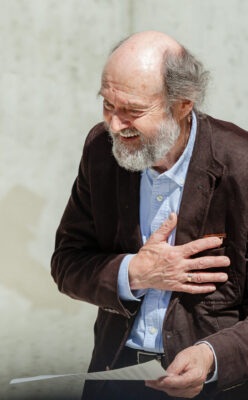
Arvo Pärt – Berliner Messe, in the year the composer turns 90!
In the Berliner Messe, Pärt’s characteristic tintinnabuli technique is beautifully showcased, with intimate duets alternating with overwhelming choral sounds. Alongside the Berliner Messe, the evening will feature pieces by Kreek, Bortniansky, Čopi, and Vasks.
The concert will be introduced by renowned musicologist Leo Samama and further enhanced by light artist Harmen van ‘t Loo. During the concert on March 22, around 20 former members of Lux will join in singing the final piece, The Fruit of Silence.
It promises to be a truly special experience, where the choir aims to demonstrate how music can connect people and bring light—both literally and figuratively—especially in these times of unrest, uncertainty, and rising tensions.
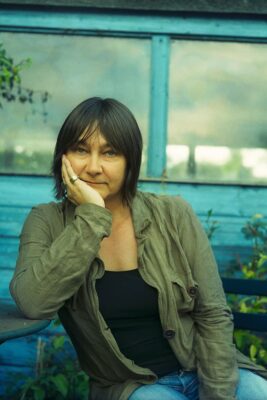
A unique concert performance with readings from the novels Spring, Summer, Autumn and Winter by Ali Smith, one of the greatest Scottish authors of our time. Every year, Smith wrote a new novel, highlighting contemporary themes such as ecology, migration, Brexit and more. NEuE has commissioned four female composers to create new ensemble works inspired by the novels. This unique mix of music and literature is presented in collaboration with the National Theater, where a matching theater performance will premiere with director Eric de Vroedt.
Programma
Kate Moore – Herfst (world premiere)
Anna Thorvaldsdottir – Spectra
Alice Yeung – Winter (world premiere)
Peter Maxwell Davies – A Sad Paven for These Distracted Tymes v
Seung Won Oh – Spring (world premiere)
Kinan Azmeh – On Solitude
Sara Zamboni – Summer (world premiere)
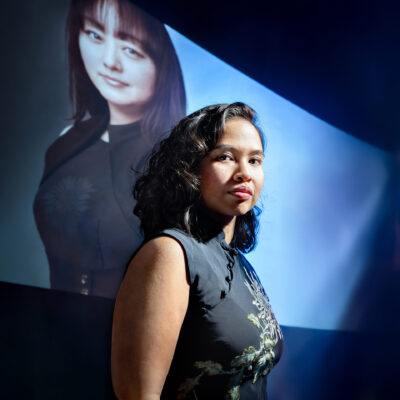
In Otemba – Daring Women, Cornelia steps out of the painting and engages in a conversation with the restorer about colonial relations, the female perspective, and autonomy.
The restoration of the 17th-century painting depicting a colonial scene culminates in a nighttime encounter between the Indonesian restorer and the woman portrayed: Cornelia van Nijenrode, a Japanese-Dutch woman and the wife of Pieter Cnoll, a wealthy senior merchant in Batavia. After his death, she remarries and becomes the first woman in the Netherlands to file a lawsuit for financial self-determination when seeking to divorce her second husband.
The libretto of Otemba – Daring Women is written by Janine Brogt, and the performance is directed by Jan van den Berg. The lead roles are performed by soloists Ryoko Aoki, Bernadeta Astari, and Michael Wilmering. Misato Mochizuki was previously featured at the Holland Festival with L’heure bleue in 2013.
“Otemba” (untamable) is not only the title of the performance but also one of the more than 160 words that Japanese has borrowed from Dutch. It refers to rebellious women who refuse to conform and choose their own path.
In Otemba, characters from different eras come together, advocating for a new perspective on history. Restoration is often described as “management of change,” and this restoration offers a renewed, decolonizing view of the past. Otemba comes to life.
Compositie: Misato Mochizuki
Libretto: Janine Brogt
Dirigent: Kanako Abe
Ensemble: New European Ensemble
Artistieke leiding & regie: Jan van den BergCornelia van Nijenrode: Ryoko Aoki
Kirana Diah: Bernadeta Astari
Miro: Michael Wilmering
Lichtontwerp: Gé Wegman
Kostuums: Lisa Konno
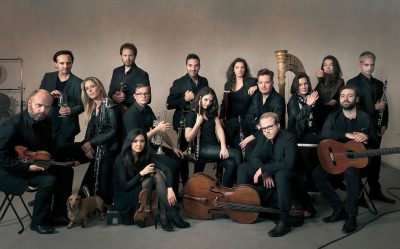
This year, experience the 200th anniversary of Bruckner’s birth together with New European Ensemble. Ten contemporary composers together compose ten brand new masterpieces, each inspired by one of Bruckner’s symphonies. NEuE presents two of these new enchanting works written by Seung-Won-Oh and Reza Navamar. The composers pay tribute to Bruckner’s ‘Romantic’ Fourth Symphony and his majestic Third Symphony.
Program
Reza Namavar – Nieuw Werk (wereldpremière)
Seung Won Oh – Spiri II: Sheltered Ritual (world première)
New European Ensemble
Carlo Boccadoro, conductor
Koninklijk Conservatorium Ensemble Academy

Resistance can be a calling, but it has its own voice and it wants to be heard. In 1973, at the end of the Vietnam War, Hans Werner Henze gave voice to 20 resistance poets in the 22 songs of his cycle Voices. A complete performance of the work, such as now, takes more than an hour and a half. Henze wrote it for a female and a male vocal soloist, with instrumental groups whose fifteen musicians, in addition to their own instruments, also play about seventy ‘world percussion’ instruments, from glass to gong. The epilogue is a pre-Columbian Festival of Flowers, a vision of a more peaceful world. Henze called Voices his ‘Lied von der Erde’. Henze himself had emigrated from post-war Germany to the mythical paradise of Italy, fleeing both homophobia and what he saw as the totalitarian serialism of the avant-garde composers’ clique in Darmstadt. He left behind an immense oeuvre and Voices is perhaps one of his most captivating and still highly relevant works.
Conductor: Carlo Boccadoro
Carina Vinke, alto
Peter Tantsits, tenor

An evening with new music in a beautiful atmosphere!
Part A – The Sea
Kate Moore – Incantation
Dai Fujikura – Wave
George Crumb- Vox Balaenae
Guillaume Connesson – Disco Toccata
Part B – How many will it take
Kinan Azmeh- How many will it take
Part C – Buhur
Kareem Roustom – Buhur mvmt. 3
Part D – Ecstatic science
Cory Latkovich – Sieves and shieves
Missy Mazzoli – Ecstatic Science
Guillaume Connesson – Techno Parade
Part E
Paul Wiancko – American Haiku
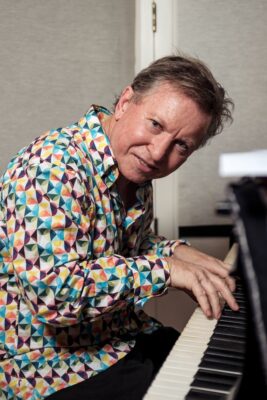
A tribute to innovator Schönberg, on his 150th birthday!
New European Ensemble celebrates Arnold Schönberg’s 150th birthday and the ensemble’s fifteenth anniversary! Henk Guittart, former violist of the Schönberg Quartet, presents a fresh, new version of Schönberg’s Violin Concerto. Dutch composer Martijn Padding is inspired by Schönberg’s colorful expressionist paintings in a new work commissioned by NEuE. The program concludes with the Serenade op.24; the first work that the ensemble performed when it was founded in 2009. A celebration of contemporary music!
Martijn Padding Ma vie en couleurs (world premiere)
Arnold Schoenberg Serenade op. 24
Arnold Schönberg Violin Concerto (arr. Henk Guittart)
New European Ensemble
Henk Guittart, conductor
Maria Milstein, violin
Emlyn Stam, viola
Vitali Rozynko, bass-baritone
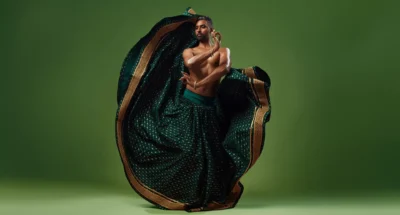
Grand World Premiere Around Iconic Poem
A world premiere at the India Dance Festival! This year, the festival opens festively with the spectacle performance Cloud Messenger.
Cloud Messenger is a contemporary, interdisciplinary music and dance performance at the intersection of Indian and Western traditions. The creators previously signed for the special dance adaptation of Philip Glass’ opera Satyagraha in previous editions of the India Dance Festival. This performance is a collaboration between professional and non professional arts institutions.
Cloud Messenger is inspired by the ancient poem ‘Meghaduta’ by one of India’s greatest poets, Kalidasa. In this poem, an exiled nature spirit, lonely and longing for his beloved, asks a cloud to bring a message of love to her. Clouds are seen as the fleeting celestial bodies that can connect people with each other. A provocative idea in a time when people, institutions, and governments seem to be moving further apart from each other. What does this more than two thousand years old, magical poem say about the current time, which is called the loneliest century ever?
Composers Samhita Mundkur and Boudewijn Ruigrok looked for common ground and differences between Indian and Western composition techniques for the new music. They drew inspiration from the ancient Sanskrit of the original poem and from the interpretation given by the British composer Gustav Holst in his composition from 1913. Dancers, under the direction of Gauri Sharma Tripathi, bring a challenging mix of modern dance and classical and modern Indian dance styles, accompanied by the New European Ensemble, soloists, and a large, specially assembled choir of singers from the Hague and Indian community. Together, they create a connection between past and present, between India and the West, and with each other…
Cloud Messenger is a production by Klapstuk in co-production with Korzo, developed in collaboration with Zangam, and supported by the Municipality of The Hague, Fund for Cultural Participation, société Gavigniès, Cultuurschakel, Cultuurfonds, Fonds Podiumkunsten, and Gravin van Bylandt Foundation.
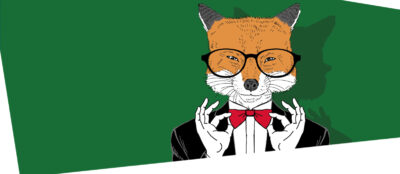
Queen Nobel holds Court Day. All the animals complain about the evil tricks of Reinaert de Vos. Bruun de Beer and Tibeert de Kater have to go get Reinaert, but he always outsmarts them. Only when his daughter Rosseline insists does Reinaert appear at the court of appeal.
Reinaert is convicted… He seems to convince Queen Nobel of his innocence with a sublime story. But Reinaert underestimated one person: his daughter.
The age-old story is adapted especially for this performance by two-time Golden Griffel winner Simon van der Geest.
Oene van Geel (winner VPRO/Boy Edgar Prize 2013) creates a versatile musical composition, in which each player has their own musical idiom.
The satirical animal story is translated into a climate lawsuit in which the ‘rights’ are seduced into corruption, in which the youth rises up against the old guard.
A multimedia family performance with the puppeteers and dancers of Duda Paiva Company, musicians of the New European Ensemble and singers of Holland Opera.
Reinaert de V. is fun for everyone aged 7 and over.

Surprising flavours stimulate your curiosity. That’s why Kompaan craft beer brewery and the New European Ensemble have joined forces.
Experience this exclusive tasting of beers and new music in a unique location in the middle of the brewery!
The musicians and brewers will explain why compositions and beers have beer paired, based on ingredients, style and taste.
Including 2 brand spanking new beers!
Allow yourself to be surprised and book quickly, as there are only 70 spots available!
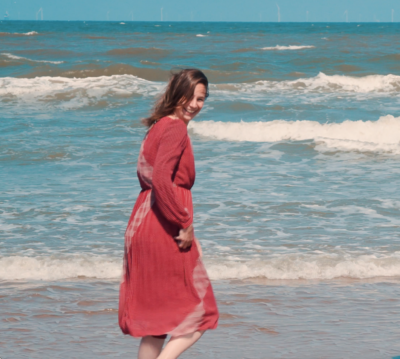
This is not a casual interest: in the Anthropocene, humans have become a geological force that threatens the Earth’s ecosystem. Two works by Kate Moore can be heard: the poignant Days and Nature from 2019 and a brand new work. In there is no one, not even the wind by John Luther Adams, the music itself has become a landscape. Climate professor Detlef van Vuuren outlines the scientific context in a lecture. The New European Ensemble sounds the alarm in this program in a brilliant way.
Kate Moore uses a music machine by The Hague artist Peter van Loon in Days and Nature to underline that an ecosystem is also a precisely tuned ‘machine’. She gives voice to the growth of a tree, from a fragile trunk to a forest giant with a wide spreading canopy. there is no one, not even the wind… (2017) by John Luther Adams is a meditation on the emptiness and loneliness of the desert, but it is not difficult to listen to the intensely melancholic music as an elegy for nature.
Program
Kate Moore – Days and Nature
John Luther Adams – There is no one, not even the wind
Kate Moore – nieuw werk (world première)
Ilya Shay – SoundAttribution (world première)
New European Ensemble
Detlef van Vuuren, lecturer
Jet van Paassen, presentation
Muriël Megens, author

This is not a casual interest: in the Anthropocene, humans have become a geological force that threatens the Earth’s ecosystem. Two works by Kate Moore can be heard: the poignant Days and Nature from 2019 and a brand new work. In there is no one, not even the wind by John Luther Adams, the music itself has become a landscape. Climate professor Detlef van Vuuren outlines the scientific context in a lecture. The New European Ensemble sounds the alarm in this program in a brilliant way.
Kate Moore uses a music machine by The Hague artist Peter van Loon in Days and Nature to underline that an ecosystem is also a precisely tuned ‘machine’. She gives voice to the growth of a tree, from a fragile trunk to a forest giant with a wide spreading canopy. there is no one, not even the wind… (2017) by John Luther Adams is a meditation on the emptiness and loneliness of the desert, but it is not difficult to listen to the intensely melancholic music as an elegy for nature.
Program
Kate Moore – Days and Nature
John Luther Adams – There is no one, not even the wind
Kate Moore – nieuw werk (world première)
Ilya Shay – SoundAttribution (world première)
New European Ensemble
Detlef van Vuuren, lecturer
Jet van Paassen, presentation
Muriël Megens, author
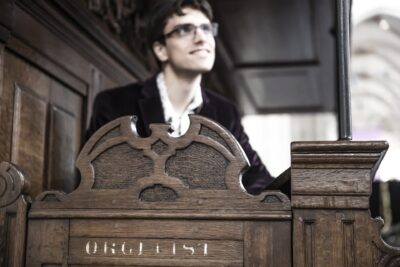
Concert on the occasion of the awarding of the Dutch Music Prize to organist Laurens de Man.
Performers
Laurens de Man, organ
Members of the New European Ensemble
Program
Promenade
Four centuries, four organs, alternating and playing together with the New European Ensemble.
Tielman Susato (ca. 1510-ca.1570)
La Morisque (from ‘The third music book (…) containing all kinds of dances’ / arrangement Laurens de Man / ensemble, Utopa Baroque organ & Sauer organ).
Anonymous (ca. 1460)
O dulcis Maria (from Buxheimer Organ Book, no. 72 / Van Straten organ).
Gerard Bunk (1888-1958)
Scherzando (from Character Pieces (opus 54) / Sauer organ).
Olivier Messiaen (1908-1992)
Transports de joie d’une âme devant la gloire du Christ qui est la sienne (from l’Ascension / Verschueren organ).
Johann Sebastian Bach (1685-1750)
Sinfonia from the cantata Wir müssen durch viel Trübsal in das Reich Gottes eingehen (BWV 146 / arrangement Laurens de Man / Ensemble and Utopa Baroque organ).
Introduction by Martijn Padding
Martijn Padding (1956) Organ concerto (Reve Concerto) for organ and ensemble (Molzer organ; premiere, commissioned by Orgelpark).
1 “The past, it knows something. We would do well to accept many things.”
2 “If I ask ‘what does De Bilt say about tomorrow’s weather?’ and someone answers: ‘God, who is the Uncaused Cause and the uncreated light, has the best intentions for us,’ that’s of little use to me if I want to go dew-trampling.”
3 “But I have no complaints for everything must be a completion of You, Infinite, for whom I sing and dance as long as it pleases You and continues to please.”
4 “If You have redeemed mankind, why not me – that would have been done in the same effort?”
Paul Hindemith (1895-1963)
Chamber Music No. 7 – Concerto for Organ and Chamber Orchestra (opus 46/2 / Sauer organ).
Not too fast
Very slow and very calm
[Without indication]
Awarding of the Dutch Music Prize by the Secretary of State for Culture and Media, Mrs. Fleur Gräper-Van Koolwijk, to Laurens de Man.
The Dutch Music Prize is the highest distinction awarded by the Ministry of Education, Culture and Science to a musician working in classical music. The prize, which is managed by the Performing Arts Fund, is awarded on the advice of the Dutch Music Prize Advisory Committee. Winners of the Dutch Music Prize follow a study trajectory focusing on personal musical development, collaborating with musicians from both the Netherlands and abroad. At the end of the trajectory, the committee advises the Performing Arts Fund whether the prize can be awarded. The committee consists of: Mauricio Fernandez, Ad ‘s-Gravesande, Marcel Mandos, Simone Meijer, Bart Visman, Ralph van Raat, and Karin Manuel as independent chair. Previous winners of the Dutch Music Prize include baritone Raoul Steffani, recorder player Lucie Horsch, violinist Janine Jansen, and pianist Ronald Brautigam.
In the Orgelpark, almost the entire history of the organ can come to life. To celebrate this unique fact, the concert opens with a tour of four organs, in five compositions, connected by interludes provided by tonight’s soloist. After a cheerful start by Susato, an anonymous medieval organ verse is played, originally performed alternating with the Gregorian Salve Regina. Far from ecclesiastical is the Scherzando by Gerard Bunk, the Rotterdam native who made a career in Germany as a pianist, organist, and conductor, sharing the stage with greats like Max Reger.
Olivier Messiaen is not only characterized by a unique style, full of ecstatic extremes, but also by beautiful French titles, sometimes of formidable length. The promenade ends with a curious historical amalgam: Bach’s virtuosic Sinfonia for concertante organ and ensemble, arranged for (part of) the lineup chosen by Paul Hindemith for his organ concerto. Fortunately, Bach himself was also not averse to arranging: he based this sinfonia on a violin concerto, which unfortunately was lost. He also transformed that same violin concerto into the Harpsichord Concerto in D minor (BWV 1052). (Photo by Foppe Schut).
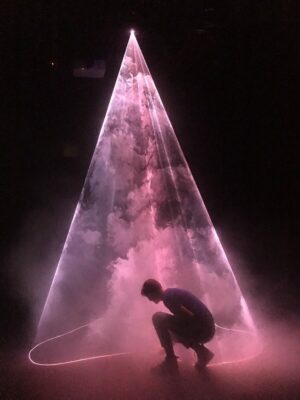
New European Ensemble plays minimalist Steve Reich’s Double Sextet, In C by Terry Riley and new work by Salvador Breed in which the worlds of electronic music and Steve Reich merge. Internationally acclaimed light artist Nick Verstand (known for his work for SXSW, MTV music video awards, Björk and Carré) enhances the trance-like experience of the music with his beautiful light choreography.

The Orgelpark could easily devote three days to the work of the Dutch composer Martijn Padding. Padding has been active as a composer, teacher and administrator for decades. As a student of Louis Andriessen, he belongs to the so-called Hague School. Padding wrote a number of notable solo concertos, that is, concertos for a solo instrument with an ensemble. This year, an organ concerto was added to this series, commissioned by the Orgelpark, and premiered earlier this week (March 7).
The afternoon concert of the Padding Day focuses on the storytelling performance ‘Grensvariaties’; why are we inclined to draw hard boundaries? Whether it concerns national borders, between us and them, between inside and outside, between the digital domain and ‘real’ life – physical and psychological borders play a prominent role in our consciousness. Writer P.F. Thomése explores this question using stories from his own family history and from his daily life. An intimate performance about a wide-ranging subject.

New European Ensemble plays minimalist Steve Reich’s Double Sextet, In C by Terry Riley and new work by Salvador Breed in which the worlds of electronic music and Steve Reich merge. Internationally acclaimed light artist Nick Verstand (known for his work for SXSW, MTV music video awards, Björk and Carré) enhances the trance-like experience of the music with his beautiful light choreography.

New European Ensemble plays minimalist Steve Reich’s Double Sextet, In C by Terry Riley and new work by Salvador Breed in which the worlds of electronic music and Steve Reich merge. Internationally acclaimed light artist Nick Verstand (known for his work for SXSW, MTV music video awards, Björk and Carré) enhances the trance-like experience of the music with his beautiful light choreography.

New European Ensemble plays minimalist Steve Reich’s Double Sextet, In C by Terry Riley and new work by Salvador Breed in which the worlds of electronic music and Steve Reich merge. Internationally acclaimed light artist Nick Verstand (known for his work for SXSW, MTV music video awards, Björk and Carré) enhances the trance-like experience of the music with his beautiful light choreography.

New European Ensemble plays minimalist Steve Reich’s Double Sextet, In C by Terry Riley and new work by Salvador Breed in which the worlds of electronic music and Steve Reich merge. Internationally acclaimed light artist Nick Verstand (known for his work for SXSW, MTV music video awards, Björk and Carré) enhances the trance-like experience of the music with his beautiful light choreography.
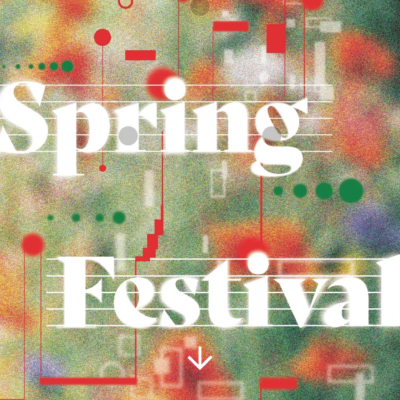
Spring Festival is the annual festival for new music, organized by the composition department of the Royal Conservatoire den Haag.
Every year, the youngest generation of composition students at the Royal Conservatoire presents themselves with new work. They show through their performances, installations, concerts and spectacles that the composition department has lost none of its radicality and inquisitive attitude in all these years.
The New European Ensemble will perform ‘La Arqueologia del Neon’ by composer in residence Oscar Bettison and new compositions by Aaron Israel Levin, Annija Zarina and Hesce Mourits.
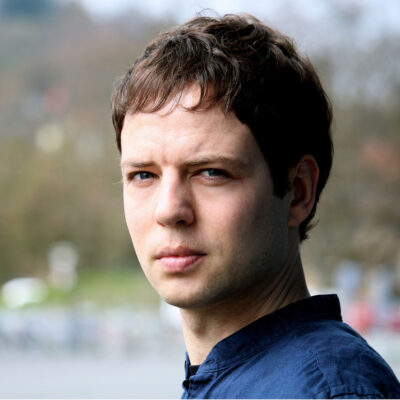
More info soon

Coll incorporates rhythmic influences from Flamenco in his contemporary works. Tales Oblicuas was commissioned by the New European Ensemble. One of Coll’s most important sources of inspiration is Elliott Carter, as you can hear in his ASKO Concerto. Mask can be heard by Michel van der Aa, one of the most important Dutch composers of today.
Programme
Francisco Coll Liquid Symmetries
Michel van der Aa Mask
Francisco Coll Taleas Oblicuas
Thomas Ades Chamber Symphony
Francisco Coll Piedras
Performers
Tito Munoz conductor
Christopher Bouwman oboe solo
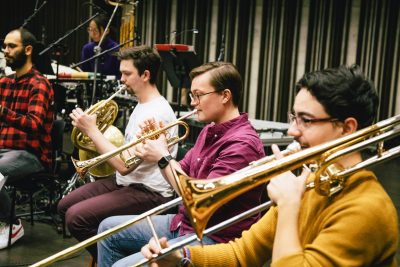
Composition students try out their sketches with members of the New European Ensemble.

Construction of an Acoustic Space is a piece by Gabriel Paiuk for ensemble and electronics. Our recording has been released on the label Timbres. In October he will receive his doctorate from Leiden University. As part of this we play his piece at his presentation concert in Amare.

New European Ensemble performs her Horn Trio and Seraphim Canticles. Of the latter work, Auerbach says: “It requires from the musicians a burning intensity, full emotional commitment and a great sensitivity to the colors and shades of sound.”
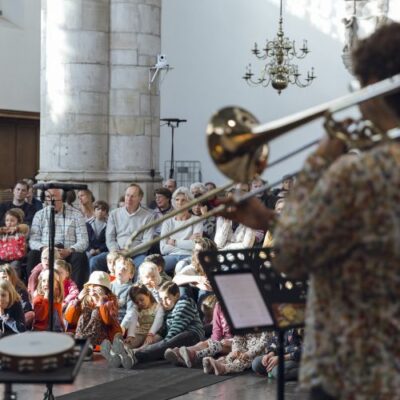
When little Peter walks out of the garden of his house one fine day, he meets all kinds of animals and experiences an exciting adventure. New European Ensemble, organist Geerten van de Wetering and narrator Tobias Wenting bring the story to life with the music of Sergei Prokofiev!
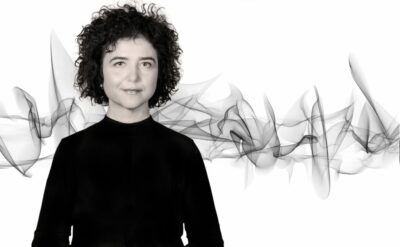
“What appeals to me in Auerbach’s music is her reflection on loneliness – the aloneness of man. […] Her music evokes an inner search for peace and balance in me as a listener and performer.” – Emlyn Stam, artistic director New European Ensemble.
Dreammusik puts the listener in a dream-like state. “It is dark, gloomy and very beautiful,” said the cellist Ani Aznavoorian to whom Auerbach dedicated it. The Australian/Dutch composer Kate Moore produces a repetitive and powerful work, based on minimal means. Pergolesi’s touching version of Stabat Mater forms the recognizable starting point for Auerbach’s composition for violin, viola and chamber orchestra. This purely instrumental Sogno di Stabat Mater contains musical elements that span three centuries.
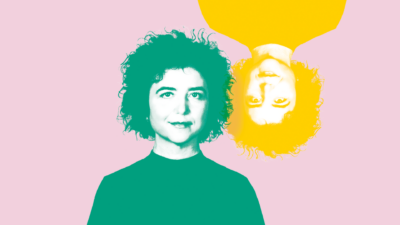
Programme
Lera Auerbach Trio for violin, French horn and piano (2014)
Lera Auerbach Seraphim Canticles (2011) sextet for 2 violins, 2 violas and 2 cello’s
Seraphim are biblical angels, terrifying, flaming and with six wings (sextet). Lera Auerbach: ‘This is a very personal work. It’s an intense prayer, perhaps an unrelenting look at despair.’ Lera Auerbach concludes her Trio for violin, horn and piano with a surprising Adagio, a masterpiece of weightlessness. She began writing to the Seraphim Canticles after her New York apartment was destroyed by fire in the fall of 2009. ‘This is a very personal work. It’s an intense prayer, perhaps an unrelenting look at despair.’
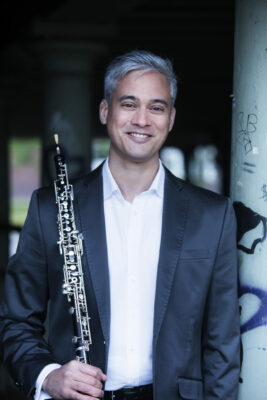
He juxtaposes extreme sonic materials in a gripping, rhythmic fashion. His works have been performed by major orchestras worldwide like the LA Philharmonic and Lucerne Symphony Orchestras, as well as featured at the BBC Proms, Verbier and Tanglewood. NEuE presents a newly commissioned work with Oboe soloist Christopher Bouwman alongside central ensemble works by Coll and composers who inspired his work.
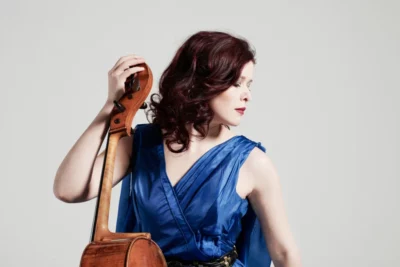
One universal language
Music can bring about change and fraternisation. It is with this motivation that Hanna Shybayeva, Maya Fridman and Konstantyn Napolov enjoy performing together. They moved to the Netherlands from Minsk, Moscow and Odessa respectively. The Russian invasion of Ukraine has turned their lives upside down. But they are determined to show that music can bridge differences and that musicians share a common language.
Together with New European Ensemble, they present a premiere programme of Ukrainian pieces and compositions by composers from Belarus and Russia who resist dictatorship. Maya Fridman will play the Dutch premiere of the Cello Sonata by Evgeny Kissin, the world-renowned Russian-born master pianist who takes a strong stand against the war, including with his compositions.
The programme also offers world premieres by Maxim Kolomiiets and Victoria Poleva, two prominent young Ukrainian composers. The Belarusian Kanstantin Yaskou was a figurehead of musical life in his homeland, which he fled. A major new work for the New European Ensemble will be premiered at our festival.
Program
Maxim Kolomiiets
Reflections of Emptiness for percussion and piano
world premiere
Victoria Poleva
Shades for percussion, viola and piano
world premiere
Evgeny Kissen
Cello Sonata
Dutch premiere
Oxana Omelchuk
Nocturne for ensemble and electronics
Kanstantin Yaskou
Oneness for ten musicians
world premiere

This concert will be livestreamed.
A panel discusses the current situation in Belarus. The work of many Belarusian artists, composers and musicians was banned in their own country. The New European Ensemble will therefore play works by Yaskou, Podgaiskaya, Voronov en Omelchuck.
This concert will be livestreamed. Order a free ticket for the livestream here.
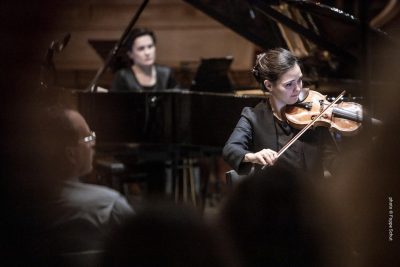
In this concert, his work Tombeau de Couperin will be played in a new version by New European Ensemble. Also: the new piece Ships Vanishing in the Horizon by Mikel Urquiza.
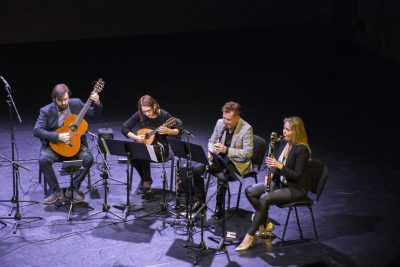
In 2018 Daphnis et Chloé premiered to the music by Ravel, and in 2020 The Echo of Being, to music by Mahler. Watch them both in one evening! (separate tickets required)

In 2018 Daphnis et Chloé premiered to the music by Ravel, and in 2020 The Echo of Being, to music by Mahler. Watch them both in one evening! (separate tickets required)
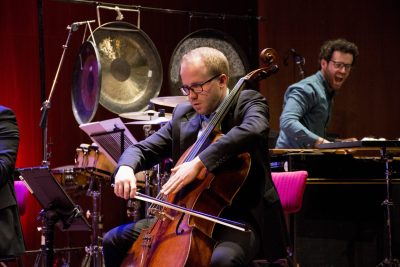
The film director creates his wonderful film stories based on symphonic masterpieces of classical music, which are performed live. During the concert, he sits in the orchestra and subtly adjusts the images on the large movie screen so that they are in sync with the music. In this way he creates a work of art in which image and sound flow into a unity.
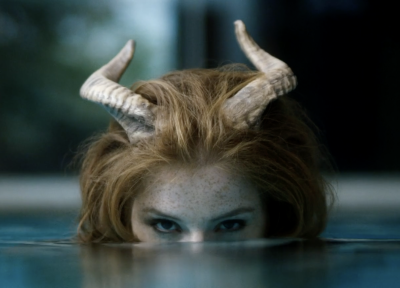
Van Woerkum’s interpretation shows that the search for true love is complicated because Chloé loses herself in ostentation and narcissism. It’s up to Daphnis to show Chloé that under her mask is a vulnerable and loving person.
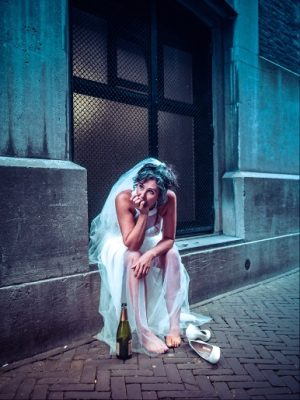
In her famous trilogy – Leedvermaak, Rijgdraad, Simon – Judith Herzberg sketches with a great sense of humor a portrait of a family in Amsterdam between the early 1970s and the turn of the century. Eric de Vroedt: “The Leedvermaak trilogy is about great and small human suffering, with the temptation to remain silent and look away.”
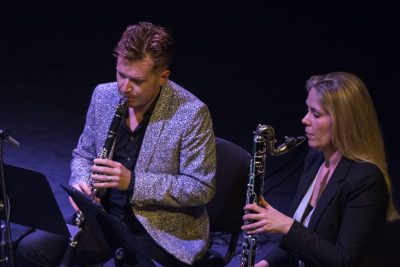
The film script is based on biographical elements from the lives of Gustav, Alma and their daughter Maria Mahler. It reflects on life, death and everything that comes after. Van Woerkum interweaves this with Mahler’s most impressive music: Totenfeier, the Fourth Symphony and his dramatic Ninth Symphony. Rarely have you experienced Mahler and his music so intensely.

In her famous trilogy – Leedvermaak, Rijgdraad, Simon – Judith Herzberg sketches with a great sense of humor a portrait of a family in Amsterdam between the early 1970s and the turn of the century. Eric de Vroedt: “The Leedvermaak trilogy is about great and small human suffering, with the temptation to remain silent and look away.”

Van Woerkum’s interpretation shows that the search for true love is complicated because Chloé loses herself in ostentation and narcissism. It’s up to Daphnis to show Chloé that under her mask is a vulnerable and loving person.

The film script is based on biographical elements from the lives of Gustav, Alma and their daughter Maria Mahler. It reflects on life, death and everything that comes after. Van Woerkum interweaves this with Mahler’s most impressive music: Totenfeier, the Fourth Symphony and his dramatic Ninth Symphony. Rarely have you experienced Mahler and his music so intensely.

In her famous trilogy – Leedvermaak, Rijgdraad, Simon – Judith Herzberg sketches with a great sense of humor a portrait of a family in Amsterdam between the early 1970s and the turn of the century. Eric de Vroedt: “The Leedvermaak trilogy is about great and small human suffering, with the temptation to remain silent and look away.”

Van Woerkum’s interpretation shows that the search for true love is complicated because Chloé loses herself in ostentation and narcissism. It’s up to Daphnis to show Chloé that under her mask is a vulnerable and loving person.
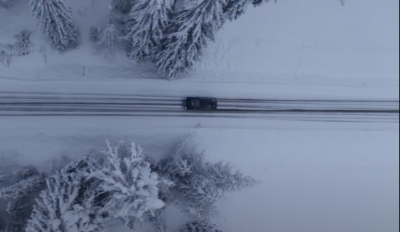
The film script is based on biographical elements from the lives of Gustav, Alma and their daughter Maria Mahler. It reflects on life, death and everything that comes after. Van Woerkum interweaves this with Mahler’s most impressive music: Totenfeier, the Fourth Symphony and his dramatic Ninth Symphony. Rarely have you experienced Mahler and his music so intensely.

In her famous trilogy – Leedvermaak, Rijgdraad, Simon – Judith Herzberg sketches with a great sense of humor a portrait of a family in Amsterdam between the early 1970s and the turn of the century. Eric de Vroedt: “The Leedvermaak trilogy is about great and small human suffering, with the temptation to remain silent and look away.”

In her famous trilogy – Leedvermaak, Rijgdraad, Simon – Judith Herzberg sketches with a great sense of humor a portrait of a family in Amsterdam between the early 1970s and the turn of the century. Eric de Vroedt: “The Leedvermaak trilogy is about great and small human suffering, with the temptation to remain silent and look away.”

In her famous trilogy – Leedvermaak, Rijgdraad, Simon – Judith Herzberg sketches with a great sense of humor a portrait of a family in Amsterdam between the early 1970s and the turn of the century. Eric de Vroedt: “The Leedvermaak trilogy is about great and small human suffering, with the temptation to remain silent and look away.”
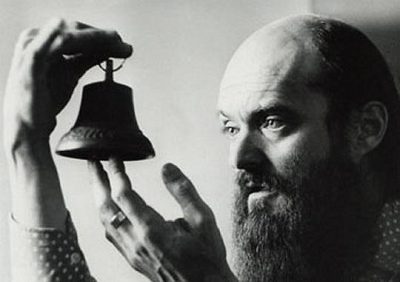
We’ll perform the central works of Pärt’s characteristic Tintinabulli style, inspired by bell sounds. This is how his Tabula Rasa, a work that heralds a new beginning, sounds like Fratres; a plea for peace and brotherhood in troubled times. We’ll play Pärt’s work Quintettino for wind quintet from 1964, his humorous Wenn Bach Bienen gezichten hätte and the beautifully tranquil work In Spe.
New European Ensemble also plays works by two young Estonian composers who were inspired by Pärt. The wind quintet Sounds Behind the Times by Pärt Uusberg, with many Estonian folk influences, and the tranquil piano trio by Riho Asko Maimets; a composer who considers Arvo Pärt to be one of his most important musical influences.
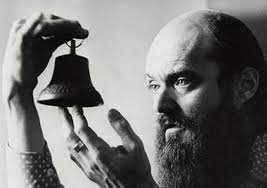
We’ll perform the central works of Pärt’s characteristic Tintinabulli style, inspired by bell sounds. This is how his Tabula Rasa, a work that heralds a new beginning, sounds like Fratres; a plea for peace and brotherhood in troubled times. We’ll play Pärt’s work Quintettino for wind quintet from 1964, his humorous Wenn Bach Bienen gezichten hätte and the beautifully tranquil work In Spe.
New European Ensemble also plays works by two young Estonian composers who were inspired by Pärt. The wind quintet Sounds Behind the Times by Pärt Uusberg, with many Estonian folk influences, and the tranquil piano trio by Riho Asko Maimets; a composer who considers Arvo Pärt to be one of his most important musical influences.

In her famous trilogy – Leedvermaak, Rijgdraad, Simon – Judith Herzberg sketches with a great sense of humor a portrait of a family in Amsterdam between the early 1970s and the turn of the century. Eric de Vroedt: “The Leedvermaak trilogy is about great and small human suffering, with the temptation to remain silent and look away.”

We’ll perform the central works of Pärt’s characteristic Tintinabulli style, inspired by bell sounds. This is how his Tabula Rasa, a work that heralds a new beginning, sounds like Fratres; a plea for peace and brotherhood in troubled times. We’ll play Pärt’s work Quintettino for wind quintet from 1964, his humorous Wenn Bach Bienen gezichten hätte and the beautifully tranquil work In Spe.
New European Ensemble also plays works by two young Estonian composers who were inspired by Pärt. The wind quintet Sounds Behind the Times by Pärt Uusberg, with many Estonian folk influences, and the tranquil piano trio by Riho Asko Maimets; a composer who considers Arvo Pärt to be one of his most important musical influences.

In her famous trilogy – Leedvermaak, Rijgdraad, Simon – Judith Herzberg sketches with a great sense of humor a portrait of a family in Amsterdam between the early 1970s and the turn of the century. Eric de Vroedt: “The Leedvermaak trilogy is about great and small human suffering, with the temptation to remain silent and look away.”

In her famous trilogy – Leedvermaak, Rijgdraad, Simon – Judith Herzberg sketches with a great sense of humor a portrait of a family in Amsterdam between the early 1970s and the turn of the century. Eric de Vroedt: “The Leedvermaak trilogy is about great and small human suffering, with the temptation to remain silent and look away.”

In her famous trilogy – Leedvermaak, Rijgdraad, Simon – Judith Herzberg sketches with a great sense of humor a portrait of a family in Amsterdam between the early 1970s and the turn of the century. Eric de Vroedt: “The Leedvermaak trilogy is about great and small human suffering, with the temptation to remain silent and look away.”

In her famous trilogy – Leedvermaak, Rijgdraad, Simon – Judith Herzberg sketches with a great sense of humor a portrait of a family in Amsterdam between the early 1970s and the turn of the century. Eric de Vroedt: “The Leedvermaak trilogy is about great and small human suffering, with the temptation to remain silent and look away.”

In her famous trilogy – Leedvermaak, Rijgdraad, Simon – Judith Herzberg sketches with a great sense of humor a portrait of a family in Amsterdam between the early 1970s and the turn of the century. Eric de Vroedt: “The Leedvermaak trilogy is about great and small human suffering, with the temptation to remain silent and look away.”

In her famous trilogy – Leedvermaak, Rijgdraad, Simon – Judith Herzberg sketches with a great sense of humor a portrait of a family in Amsterdam between the early 1970s and the turn of the century. Eric de Vroedt: “The Leedvermaak trilogy is about great and small human suffering, with the temptation to remain silent and look away.”

In her famous trilogy – Leedvermaak, Rijgdraad, Simon – Judith Herzberg sketches with a great sense of humor a portrait of a family in Amsterdam between the early 1970s and the turn of the century. Eric de Vroedt: “The Leedvermaak trilogy is about great and small human suffering, with the temptation to remain silent and look away.”

In her famous trilogy – Leedvermaak, Rijgdraad, Simon – Judith Herzberg sketches with a great sense of humor a portrait of a family in Amsterdam between the early 1970s and the turn of the century. Eric de Vroedt: “The Leedvermaak trilogy is about great and small human suffering, with the temptation to remain silent and look away.”

In her famous trilogy – Leedvermaak, Rijgdraad, Simon – Judith Herzberg sketches with a great sense of humor a portrait of a family in Amsterdam between the early 1970s and the turn of the century. Eric de Vroedt: “The Leedvermaak trilogy is about great and small human suffering, with the temptation to remain silent and look away.”

In her famous trilogy – Leedvermaak, Rijgdraad, Simon – Judith Herzberg sketches with a great sense of humor a portrait of a family in Amsterdam between the early 1970s and the turn of the century. Eric de Vroedt: “The Leedvermaak trilogy is about great and small human suffering, with the temptation to remain silent and look away.”

In her famous trilogy – Leedvermaak, Rijgdraad, Simon – Judith Herzberg sketches with a great sense of humor a portrait of a family in Amsterdam between the early 1970s and the turn of the century. Eric de Vroedt: “The Leedvermaak trilogy is about great and small human suffering, with the temptation to remain silent and look away.”

In her famous trilogy – Leedvermaak, Rijgdraad, Simon – Judith Herzberg sketches with a great sense of humor a portrait of a family in Amsterdam between the early 1970s and the turn of the century. Eric de Vroedt: “The Leedvermaak trilogy is about great and small human suffering, with the temptation to remain silent and look away.”

In her famous trilogy – Leedvermaak, Rijgdraad, Simon – Judith Herzberg sketches with a great sense of humor a portrait of a family in Amsterdam between the early 1970s and the turn of the century. Eric de Vroedt: “The Leedvermaak trilogy is about great and small human suffering, with the temptation to remain silent and look away.”

In her famous trilogy – Leedvermaak, Rijgdraad, Simon – Judith Herzberg sketches with a great sense of humor a portrait of a family in Amsterdam between the early 1970s and the turn of the century. Eric de Vroedt: “The Leedvermaak trilogy is about great and small human suffering, with the temptation to remain silent and look away.”
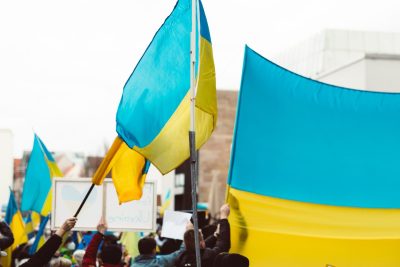
On the morning of February 24, the Russian attack on Ukraine began. Since then, the war has dominated not only news outlets and newspaper front pages but the minds of every compassionate news consumer. Two months after the start of the war, Rode Hoed organizes an afternoon about Ukraine: with lectures, music and exchanges of views.
While one now needs to talk about the developments of the war, the other mainly needs to listen without actively contributing. This afternoon there is something for everyone. We hear lectures from various speakers with a special connection to Ukraine about their experience of this war and their memories of Ukraine before the war. These stories, poems and experiences are interspersed with music by New European Ensemble, who play the work of Ukrainian composers.
Finally, there is room for conversation, both between the speakers on stage and with the audience in the hall, moderated by journalist Franka Hummels. We then take a look at the current affairs and current developments in the country.

In her famous trilogy – Leedvermaak, Rijgdraad, Simon – Judith Herzberg sketches with a great sense of humor a portrait of a family in Amsterdam between the early 1970s and the turn of the century. Eric de Vroedt: “The Leedvermaak trilogy is about great and small human suffering, with the temptation to remain silent and look away.”

In her famous trilogy – Leedvermaak, Rijgdraad, Simon – Judith Herzberg sketches with a great sense of humor a portrait of a family in Amsterdam between the early 1970s and the turn of the century. Eric de Vroedt: “The Leedvermaak trilogy is about great and small human suffering, with the temptation to remain silent and look away.”

In her famous trilogy – Leedvermaak, Rijgdraad, Simon – Judith Herzberg sketches with a great sense of humor a portrait of a family in Amsterdam between the early 1970s and the turn of the century. Eric de Vroedt: “The Leedvermaak trilogy is about great and small human suffering, with the temptation to remain silent and look away.”

In her famous trilogy – Leedvermaak, Rijgdraad, Simon – Judith Herzberg sketches with a great sense of humor a portrait of a family in Amsterdam between the early 1970s and the turn of the century. Eric de Vroedt: “The Leedvermaak trilogy is about great and small human suffering, with the temptation to remain silent and look away.”

In her famous trilogy – Leedvermaak, Rijgdraad, Simon – Judith Herzberg sketches with a great sense of humor a portrait of a family in Amsterdam between the early 1970s and the turn of the century. Eric de Vroedt: “The Leedvermaak trilogy is about great and small human suffering, with the temptation to remain silent and look away.”

In her famous trilogy – Leedvermaak, Rijgdraad, Simon – Judith Herzberg sketches with a great sense of humor a portrait of a family in Amsterdam between the early 1970s and the turn of the century. Eric de Vroedt: “The Leedvermaak trilogy is about great and small human suffering, with the temptation to remain silent and look away.”

In her famous trilogy – Leedvermaak, Rijgdraad, Simon – Judith Herzberg sketches with a great sense of humor a portrait of a family in Amsterdam between the early 1970s and the turn of the century. Eric de Vroedt: “The Leedvermaak trilogy is about great and small human suffering, with the temptation to remain silent and look away.”

In her famous trilogy – Leedvermaak, Rijgdraad, Simon – Judith Herzberg sketches with a great sense of humor a portrait of a family in Amsterdam between the early 1970s and the turn of the century. Eric de Vroedt: “The Leedvermaak trilogy is about great and small human suffering, with the temptation to remain silent and look away.”

In her famous trilogy – Leedvermaak, Rijgdraad, Simon – Judith Herzberg sketches with a great sense of humor a portrait of a family in Amsterdam between the early 1970s and the turn of the century. Eric de Vroedt: “The Leedvermaak trilogy is about great and small human suffering, with the temptation to remain silent and look away.”

In her famous trilogy – Leedvermaak, Rijgdraad, Simon – Judith Herzberg sketches with a great sense of humor a portrait of a family in Amsterdam between the early 1970s and the turn of the century. Eric de Vroedt: “The Leedvermaak trilogy is about great and small human suffering, with the temptation to remain silent and look away.”

In her famous trilogy – Leedvermaak, Rijgdraad, Simon – Judith Herzberg sketches with a great sense of humor a portrait of a family in Amsterdam between the early 1970s and the turn of the century. Eric de Vroedt: “The Leedvermaak trilogy is about great and small human suffering, with the temptation to remain silent and look away.”

In her famous trilogy – Leedvermaak, Rijgdraad, Simon – Judith Herzberg sketches with a great sense of humor a portrait of a family in Amsterdam between the early 1970s and the turn of the century. Eric de Vroedt: “The Leedvermaak trilogy is about great and small human suffering, with the temptation to remain silent and look away.”

In her famous trilogy – Leedvermaak, Rijgdraad, Simon – Judith Herzberg sketches with a great sense of humor a portrait of a family in Amsterdam between the early 1970s and the turn of the century. Eric de Vroedt: “The Leedvermaak trilogy is about great and small human suffering, with the temptation to remain silent and look away.”

In her famous trilogy – Leedvermaak, Rijgdraad, Simon – Judith Herzberg sketches with a great sense of humor a portrait of a family in Amsterdam between the early 1970s and the turn of the century. Eric de Vroedt: “The Leedvermaak trilogy is about great and small human suffering, with the temptation to remain silent and look away.”
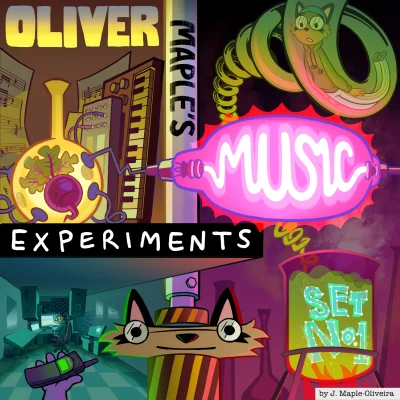
Brazilian composer Julian Maple-Oliveira, who studied not only composition but also sonology, loves alternative and complex pop music. He has now combined all these interests in an experimental song cycle for soprano, acoustic instruments (played by the members of the New European Ensemble) and self-built electromechanical instruments.
Following this, the New European Ensemble performs the Dutch premiere of Ritroverai le nubi – a work about childlike silence and contemplation by Italian Amsterdammer Giuliano Bracci.
Julian “For the Dag in de Branding project I am developing a series of five musical experiments in the form of songs for voice, electronics and instrumental ensemble. This project combines my love for cartoons and contemporary music. In associating these two aspects I’ve created a persona named Oliver Maple – a cartoon character who writes music and goes on fantastic (and fun) adventures.” You can listen to the 5 songs here. These songs will be performed in a special arrangement on May 21st by the New European Ensemble.

In her famous trilogy – Leedvermaak, Rijgdraad, Simon – Judith Herzberg sketches with a great sense of humor a portrait of a family in Amsterdam between the early 1970s and the turn of the century. Eric de Vroedt: “The Leedvermaak trilogy is about great and small human suffering, with the temptation to remain silent and look away.”

In her famous trilogy – Leedvermaak, Rijgdraad, Simon – Judith Herzberg sketches with a great sense of humor a portrait of a family in Amsterdam between the early 1970s and the turn of the century. Eric de Vroedt: “The Leedvermaak trilogy is about great and small human suffering, with the temptation to remain silent and look away.”

In her famous trilogy – Leedvermaak, Rijgdraad, Simon – Judith Herzberg sketches with a great sense of humor a portrait of a family in Amsterdam between the early 1970s and the turn of the century. Eric de Vroedt: “The Leedvermaak trilogy is about great and small human suffering, with the temptation to remain silent and look away.”

In her famous trilogy – Leedvermaak, Rijgdraad, Simon – Judith Herzberg sketches with a great sense of humor a portrait of a family in Amsterdam between the early 1970s and the turn of the century. Eric de Vroedt: “The Leedvermaak trilogy is about great and small human suffering, with the temptation to remain silent and look away.”

Her work is on the one hand rooted in the Russian tradition of her predecessors such as Dmitri Shostakovich, but on the other hand it also originates from a process of improvisation and intimate reflection.
The composer played the guitar herself, so this instrument is close to her heart. Another of her favorite instruments is the double bass, which takes on a solo role in Sotto Voce and Repentance. These chamber music works from the last decades are written for a small guitar ensemble with a solo part for the viola in Sotto Voce and for the cello in the mysterious piece Repentance.
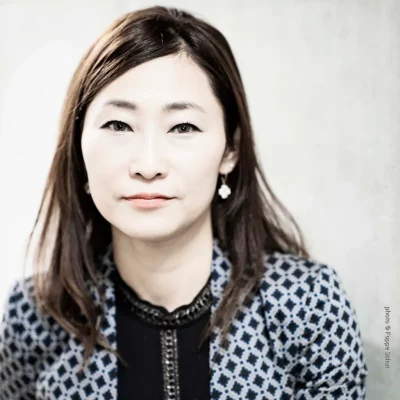
New Music NOW organizes the first edition of ‘Dag van de Componist’. A celebration of new music. Music by composers who are active in the Netherlands can be heard throughout the country: not only in concert halls and theatres, but also from clock towers, on the street and in living rooms. The NTR and VPRO will make live reports and New Music NOW streams concerts and interviews all day long. Reporters from all over the country report on this special day.
New European Ensemble plays music bij Seung-Won Oh:
A Portrait
Black Crow
Sifting Through Memory
New Work

The School for Young Talent and Young KC (Music) end the school year with the traditional Young KC Summer Festival. This intensive week-long programme of choral singing, chamber music, workshops and concerts gives the pupils of Young KC the opportunity to learn more about each other, both personally and as musicians.
There is also plenty for the public to enjoy during the week with one or more fantastic concerts every day. The event includes performances by the Atheneum Chamber Orchestra (AKO) and AKO Junior, and the New European Ensemble together with the young winners of the Royal Conservatoire’s Composition Prize. Further details of the programme will follow in due course.

Lucas van Woerkum makes silent films inspired by the music and lives of composers and synchronises them live during performances. As the New European Ensemble perform sections of Mahler’s second, fourth, eighth, ninth and tenth symphonies, van Woerkum weaves a poetic narrative in his film The Echo of Being, which is based on details from the lives of Gustav and Alma Mahler and their young daughter Maria, with the lead roles played by actors Amira Casar (Call me by your name) and Greg Wise (The Crown).
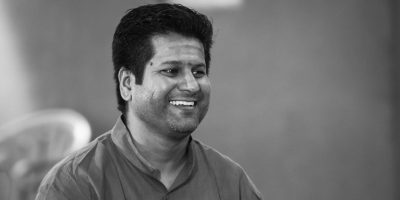
Playing them, however, is a very different story; only brilliant musicians like Manjunath can do that. And the musicians of the leading New European Ensemble, since they have been working closely with Manjunath this year. Four young composers were given the opportunity to write new work for this unique combination of contemporary music and astonishing Indian rhythms, which will be premiered tonight.

Playing them, however, is a very different story; only brilliant musicians like Manjunath can do that. And the musicians of the leading New European Ensemble, since they have been working closely with Manjunath this year. Four young composers were given the opportunity to write new work for this unique combination of contemporary music and astonishing Indian rhythms, which will be premiered tonight.
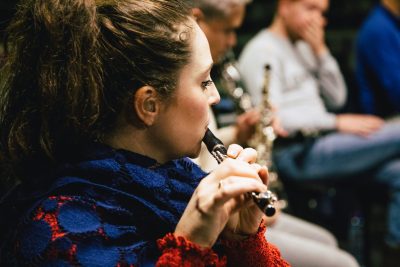
New works that bridge the gap between contemporary experimentation and tango traditions. The ensemble plays together with tango musicians Gustavo Beytelmann (piano), Victor Hugo Villena (bandoneon), Virgilio Monti (double bass), Oscar Bohórquez (violin) and Barbara Varassi (piano) – all Argentine tango musicians.
How do the many opposites of the night, such as insomnia and dreams sound?
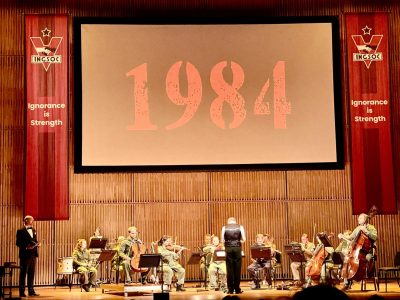
The relevance of the book is demonstrated by the famous whistleblower Edward Snowden, who collaborated on the video performance from exile. In the new music theater piece 1984 by the Estonian composer Mihkel Kerem, music, text and image alternate. This contemporary adaptation illustrates how close Orwell’s dystopian novel is to reality. Actor Boris van der Ham plays various roles live.
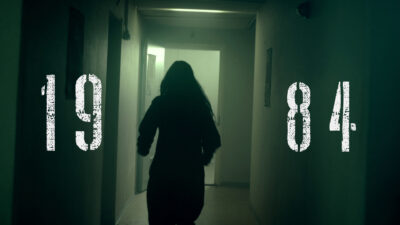
His music is accompanied by the cinematographic images of director Gijs Besseling – anticipated by a video introduction by Edward Snowden – that reconstruct the Orwellian narrative by transplanting it to our present. This encounter, today becomes a musical show- the Italian version of which includes the presence of actor Marco Quaglia- intent on investigating the way in which our lives increasingly depend on technology and how the latter allows governments and companies to intercept and record our data. Do we live in the dystopia described by Orwell? And is an escape still possible?
He has written works for the Salzburger Festspiele, Lucerne Festival, BBC Proms and Chicago Symphony among others.
His majestic and refined concerto for cello and ensemble makes use of subtle instrumentation. Ice full of exotic pecussion instruments, was inspired by the breaking up of Arctic and Antarctic ice sheets. The focus on nature is also central to Japanese composer Toshio Hosokawa of the older generation, whose work Im Frühlingsgarten, is included. NEuE will also play a new work by Japanese/Dutch composer Yu Oda who connects the music of John Dowland with a contemporary Japanese electronic sound world.
He has written works for the Salzburger Festspiele, Lucerne Festival, BBC Proms and Chicago Symphony among others.
His majestic and refined concerto for cello and ensemble makes use of subtle instrumentation. Ice full of exotic pecussion instruments, was inspired by the breaking up of Arctic and Antarctic ice sheets. The focus on nature is also central to Japanese composer Toshio Hosokawa of the older generation, whose work Im Frühlingsgarten, is included. NEuE will also play a new work by Japanese/Dutch composer Yu Oda who connects the music of John Dowland with a contemporary Japanese electronic sound world.
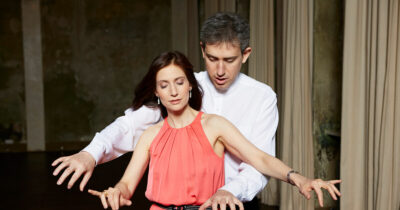
Piano duo Scholtes & Janssens and the equally brilliant Israeli Silver Garburg Piano Duo join forces for Bach’s Concerto for four pianos and string orchestra, rarely heard live, and a performance of Ravel’s Bolero on four pianos. Not the colors of the orchestra, but the hypnotic repetition of the theme gets all the attention.
If one contemporary composer can further underline the magic of two pianos, it is Kate Moore. With her melodically driven minimalism, this Australian composer needs few resources to conjure up with sound and colour. For this reason, in 2017 she was the first female composer to win the Matthijs Vermeulen Prize. And for that reason alone the first performance of her Concerto for two pianos and string orchestra is an unmissable closing of the Pianoduo Festival.
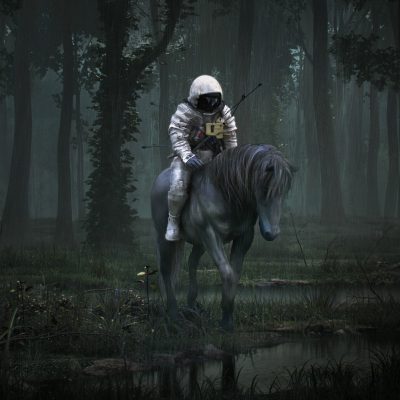
This brand-new opera based on the famous novel by Cervantes offers new music, and also a main role for medieval music from various countries and cultures. This production is an adventurous sequel to the ‘new baroque opera’ Vivaldi – Dangerous Liaisons, which received very positive reviews during its sold-out tour.
In this performance, Don Quixote is the wealthy owner of an international holding with employees from all corners of the world. He is rich, but his life is monotonous and meaningless. Looking for a more meaningful existence, he is daydreaming about bygone times. The boundaries between reality and the imagination become blurred. He thinks of himself as a knight and sees the people around him as servants, noble ladies and magicians. Everyone involved gets tangled up in a life story that is both miraculous and touching.

This brand-new opera based on the famous novel by Cervantes offers new music, and also a main role for medieval music from various countries and cultures. This production is an adventurous sequel to the ‘new baroque opera’ Vivaldi – Dangerous Liaisons, which received very positive reviews during its sold-out tour.
In this performance, Don Quixote is the wealthy owner of an international holding with employees from all corners of the world. He is rich, but his life is monotonous and meaningless. Looking for a more meaningful existence, he is daydreaming about bygone times. The boundaries between reality and the imagination become blurred. He thinks of himself as a knight and sees the people around him as servants, noble ladies and magicians. Everyone involved gets tangled up in a life story that is both miraculous and touching.

This brand-new opera based on the famous novel by Cervantes offers new music, and also a main role for medieval music from various countries and cultures. This production is an adventurous sequel to the ‘new baroque opera’ Vivaldi – Dangerous Liaisons, which received very positive reviews during its sold-out tour.
In this performance, Don Quixote is the wealthy owner of an international holding with employees from all corners of the world. He is rich, but his life is monotonous and meaningless. Looking for a more meaningful existence, he is daydreaming about bygone times. The boundaries between reality and the imagination become blurred. He thinks of himself as a knight and sees the people around him as servants, noble ladies and magicians. Everyone involved gets tangled up in a life story that is both miraculous and touching.

This brand-new opera based on the famous novel by Cervantes offers new music, and also a main role for medieval music from various countries and cultures. This production is an adventurous sequel to the ‘new baroque opera’ Vivaldi – Dangerous Liaisons, which received very positive reviews during its sold-out tour.
In this performance, Don Quixote is the wealthy owner of an international holding with employees from all corners of the world. He is rich, but his life is monotonous and meaningless. Looking for a more meaningful existence, he is daydreaming about bygone times. The boundaries between reality and the imagination become blurred. He thinks of himself as a knight and sees the people around him as servants, noble ladies and magicians. Everyone involved gets tangled up in a life story that is both miraculous and touching.

This brand-new opera based on the famous novel by Cervantes offers new music, and also a main role for medieval music from various countries and cultures. This production is an adventurous sequel to the ‘new baroque opera’ Vivaldi – Dangerous Liaisons, which received very positive reviews during its sold-out tour.
In this performance, Don Quixote is the wealthy owner of an international holding with employees from all corners of the world. He is rich, but his life is monotonous and meaningless. Looking for a more meaningful existence, he is daydreaming about bygone times. The boundaries between reality and the imagination become blurred. He thinks of himself as a knight and sees the people around him as servants, noble ladies and magicians. Everyone involved gets tangled up in a life story that is both miraculous and touching.

This brand-new opera based on the famous novel by Cervantes offers new music, and also a main role for medieval music from various countries and cultures. This production is an adventurous sequel to the ‘new baroque opera’ Vivaldi – Dangerous Liaisons, which received very positive reviews during its sold-out tour.
In this performance, Don Quixote is the wealthy owner of an international holding with employees from all corners of the world. He is rich, but his life is monotonous and meaningless. Looking for a more meaningful existence, he is daydreaming about bygone times. The boundaries between reality and the imagination become blurred. He thinks of himself as a knight and sees the people around him as servants, noble ladies and magicians. Everyone involved gets tangled up in a life story that is both miraculous and touching.

This brand-new opera based on the famous novel by Cervantes offers new music, and also a main role for medieval music from various countries and cultures. This production is an adventurous sequel to the ‘new baroque opera’ Vivaldi – Dangerous Liaisons, which received very positive reviews during its sold-out tour.
In this performance, Don Quixote is the wealthy owner of an international holding with employees from all corners of the world. He is rich, but his life is monotonous and meaningless. Looking for a more meaningful existence, he is daydreaming about bygone times. The boundaries between reality and the imagination become blurred. He thinks of himself as a knight and sees the people around him as servants, noble ladies and magicians. Everyone involved gets tangled up in a life story that is both miraculous and touching.

This brand-new opera based on the famous novel by Cervantes offers new music, and also a main role for medieval music from various countries and cultures. This production is an adventurous sequel to the ‘new baroque opera’ Vivaldi – Dangerous Liaisons, which received very positive reviews during its sold-out tour.
In this performance, Don Quixote is the wealthy owner of an international holding with employees from all corners of the world. He is rich, but his life is monotonous and meaningless. Looking for a more meaningful existence, he is daydreaming about bygone times. The boundaries between reality and the imagination become blurred. He thinks of himself as a knight and sees the people around him as servants, noble ladies and magicians. Everyone involved gets tangled up in a life story that is both miraculous and touching.

This brand-new opera based on the famous novel by Cervantes offers new music, and also a main role for medieval music from various countries and cultures. This production is an adventurous sequel to the ‘new baroque opera’ Vivaldi – Dangerous Liaisons, which received very positive reviews during its sold-out tour.
In this performance, Don Quixote is the wealthy owner of an international holding with employees from all corners of the world. He is rich, but his life is monotonous and meaningless. Looking for a more meaningful existence, he is daydreaming about bygone times. The boundaries between reality and the imagination become blurred. He thinks of himself as a knight and sees the people around him as servants, noble ladies and magicians. Everyone involved gets tangled up in a life story that is both miraculous and touching.

This brand-new opera based on the famous novel by Cervantes offers new music, and also a main role for medieval music from various countries and cultures. This production is an adventurous sequel to the ‘new baroque opera’ Vivaldi – Dangerous Liaisons, which received very positive reviews during its sold-out tour.
In this performance, Don Quixote is the wealthy owner of an international holding with employees from all corners of the world. He is rich, but his life is monotonous and meaningless. Looking for a more meaningful existence, he is daydreaming about bygone times. The boundaries between reality and the imagination become blurred. He thinks of himself as a knight and sees the people around him as servants, noble ladies and magicians. Everyone involved gets tangled up in a life story that is both miraculous and touching.

This brand-new opera based on the famous novel by Cervantes offers new music, and also a main role for medieval music from various countries and cultures. This production is an adventurous sequel to the ‘new baroque opera’ Vivaldi – Dangerous Liaisons, which received very positive reviews during its sold-out tour.
In this performance, Don Quixote is the wealthy owner of an international holding with employees from all corners of the world. He is rich, but his life is monotonous and meaningless. Looking for a more meaningful existence, he is daydreaming about bygone times. The boundaries between reality and the imagination become blurred. He thinks of himself as a knight and sees the people around him as servants, noble ladies and magicians. Everyone involved gets tangled up in a life story that is both miraculous and touching.

This brand-new opera based on the famous novel by Cervantes offers new music, and also a main role for medieval music from various countries and cultures. This production is an adventurous sequel to the ‘new baroque opera’ Vivaldi – Dangerous Liaisons, which received very positive reviews during its sold-out tour.
In this performance, Don Quixote is the wealthy owner of an international holding with employees from all corners of the world. He is rich, but his life is monotonous and meaningless. Looking for a more meaningful existence, he is daydreaming about bygone times. The boundaries between reality and the imagination become blurred. He thinks of himself as a knight and sees the people around him as servants, noble ladies and magicians. Everyone involved gets tangled up in a life story that is both miraculous and touching.

This brand-new opera based on the famous novel by Cervantes offers new music, and also a main role for medieval music from various countries and cultures. This production is an adventurous sequel to the ‘new baroque opera’ Vivaldi – Dangerous Liaisons, which received very positive reviews during its sold-out tour.
In this performance, Don Quixote is the wealthy owner of an international holding with employees from all corners of the world. He is rich, but his life is monotonous and meaningless. Looking for a more meaningful existence, he is daydreaming about bygone times. The boundaries between reality and the imagination become blurred. He thinks of himself as a knight and sees the people around him as servants, noble ladies and magicians. Everyone involved gets tangled up in a life story that is both miraculous and touching.

This brand-new opera based on the famous novel by Cervantes offers new music, and also a main role for medieval music from various countries and cultures. This production is an adventurous sequel to the ‘new baroque opera’ Vivaldi – Dangerous Liaisons, which received very positive reviews during its sold-out tour.
In this performance, Don Quixote is the wealthy owner of an international holding with employees from all corners of the world. He is rich, but his life is monotonous and meaningless. Looking for a more meaningful existence, he is daydreaming about bygone times. The boundaries between reality and the imagination become blurred. He thinks of himself as a knight and sees the people around him as servants, noble ladies and magicians. Everyone involved gets tangled up in a life story that is both miraculous and touching.

This brand-new opera based on the famous novel by Cervantes offers new music, and also a main role for medieval music from various countries and cultures. This production is an adventurous sequel to the ‘new baroque opera’ Vivaldi – Dangerous Liaisons, which received very positive reviews during its sold-out tour.
In this performance, Don Quixote is the wealthy owner of an international holding with employees from all corners of the world. He is rich, but his life is monotonous and meaningless. Looking for a more meaningful existence, he is daydreaming about bygone times. The boundaries between reality and the imagination become blurred. He thinks of himself as a knight and sees the people around him as servants, noble ladies and magicians. Everyone involved gets tangled up in a life story that is both miraculous and touching.
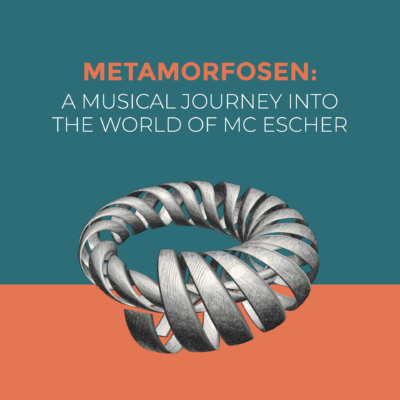
New work by Romanian composer Vlad Maistorovici, a touching homage to the famous Metamorfose no.2 as well as Maistorovici’s post-Webernesque arrangements of Bach’s canons, so closely connected to Escher’s mathematical world are among the highlights. The program includes Arvo Pärt’s Spiegel im spiegel, also reflected in Escher’s work, as well as the mathematically unified Konzert für 9 Instrumente by Anton Webern, another composer whose use of canons and variations connects with Escher’s imagery.
Program:
J. D. HEINICHEN Kleines harmonisches Labyrinth (formerly BWV 591)
(hyperbolisation for ensemble by V. Maistorovici)
J. S. BACH Endlessly rising canon from Das Musikalische Opfer BWV 1079
(orch. V. Maistorovici)
A. WEBERN Concerto for 9 instruments op. 24
A. PÄRT Spiegel im spiegel
for cello and piano
V. MAISTOROVICI Metamorfose after M. C. Escher
for ensemble of 15 instruments (world premiere)
J. S. BACH Chorale In dir ist freude BWV 615
(orch. V. Maistorovici)

This brand-new opera based on the famous novel by Cervantes offers new music, and also a main role for medieval music from various countries and cultures. This production is an adventurous sequel to the ‘new baroque opera’ Vivaldi – Dangerous Liaisons, which received very positive reviews during its sold-out tour.
In this performance, Don Quixote is the wealthy owner of an international holding with employees from all corners of the world. He is rich, but his life is monotonous and meaningless. Looking for a more meaningful existence, he is daydreaming about bygone times. The boundaries between reality and the imagination become blurred. He thinks of himself as a knight and sees the people around him as servants, noble ladies and magicians. Everyone involved gets tangled up in a life story that is both miraculous and touching.
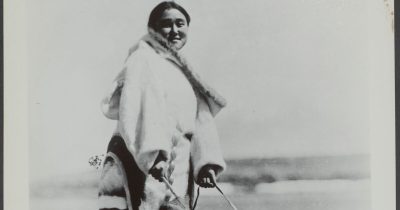
As an ethnographic epic about the hard and heroic life of an Inuit family in the Canadian Arctic, this primal father of documentary still captivates beyond measure. The score by Timothy Brock, specialist in orchestral music for silent films, refers to music from the period when Nanook of the North was made and is performed live by the New European Ensemble.
Although the film is based on the daily life of the Inuit, documentary maker Robert Flaherty staged a lot. Sometimes he even recorded customs that were largely a thing of the past for the generation of that time, such as hunting with harpoons instead of guns. In order to also film indoor scenes, the local crew built a special igloo, which was cut open on one side to let in sunlight.

This brand-new opera based on the famous novel by Cervantes offers new music, and also a main role for medieval music from various countries and cultures. This production is an adventurous sequel to the ‘new baroque opera’ Vivaldi – Dangerous Liaisons, which received very positive reviews during its sold-out tour.
In this performance, Don Quixote is the wealthy owner of an international holding with employees from all corners of the world. He is rich, but his life is monotonous and meaningless. Looking for a more meaningful existence, he is daydreaming about bygone times. The boundaries between reality and the imagination become blurred. He thinks of himself as a knight and sees the people around him as servants, noble ladies and magicians. Everyone involved gets tangled up in a life story that is both miraculous and touching.

This brand-new opera based on the famous novel by Cervantes offers new music, and also a main role for medieval music from various countries and cultures. This production is an adventurous sequel to the ‘new baroque opera’ Vivaldi – Dangerous Liaisons, which received very positive reviews during its sold-out tour.
In this performance, Don Quixote is the wealthy owner of an international holding with employees from all corners of the world. He is rich, but his life is monotonous and meaningless. Looking for a more meaningful existence, he is daydreaming about bygone times. The boundaries between reality and the imagination become blurred. He thinks of himself as a knight and sees the people around him as servants, noble ladies and magicians. Everyone involved gets tangled up in a life story that is both miraculous and touching.

This brand-new opera based on the famous novel by Cervantes offers new music, and also a main role for medieval music from various countries and cultures. This production is an adventurous sequel to the ‘new baroque opera’ Vivaldi – Dangerous Liaisons, which received very positive reviews during its sold-out tour.
In this performance, Don Quixote is the wealthy owner of an international holding with employees from all corners of the world. He is rich, but his life is monotonous and meaningless. Looking for a more meaningful existence, he is daydreaming about bygone times. The boundaries between reality and the imagination become blurred. He thinks of himself as a knight and sees the people around him as servants, noble ladies and magicians. Everyone involved gets tangled up in a life story that is both miraculous and touching.
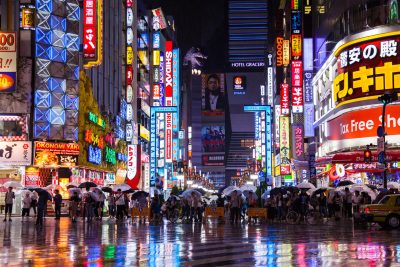
Toshio Hosokawa – a portrait
Hosokawa – Drawing
Hosokawa – Two Japanese Folksongs
Pasi Lyytikäinen – Nieuw werk
Hosokawa – Nieuw werk
Hosokawa – Singing Garden
Hosokawa – Landscape VI Cloudscapes

This brand-new opera based on the famous novel by Cervantes offers new music, and also a main role for medieval music from various countries and cultures. This production is an adventurous sequel to the ‘new baroque opera’ Vivaldi – Dangerous Liaisons, which received very positive reviews during its sold-out tour.
In this performance, Don Quixote is the wealthy owner of an international holding with employees from all corners of the world. He is rich, but his life is monotonous and meaningless. Looking for a more meaningful existence, he is daydreaming about bygone times. The boundaries between reality and the imagination become blurred. He thinks of himself as a knight and sees the people around him as servants, noble ladies and magicians. Everyone involved gets tangled up in a life story that is both miraculous and touching.

This brand-new opera based on the famous novel by Cervantes offers new music, and also a main role for medieval music from various countries and cultures. This production is an adventurous sequel to the ‘new baroque opera’ Vivaldi – Dangerous Liaisons, which received very positive reviews during its sold-out tour.
In this performance, Don Quixote is the wealthy owner of an international holding with employees from all corners of the world. He is rich, but his life is monotonous and meaningless. Looking for a more meaningful existence, he is daydreaming about bygone times. The boundaries between reality and the imagination become blurred. He thinks of himself as a knight and sees the people around him as servants, noble ladies and magicians. Everyone involved gets tangled up in a life story that is both miraculous and touching.

This brand-new opera based on the famous novel by Cervantes offers new music, and also a main role for medieval music from various countries and cultures. This production is an adventurous sequel to the ‘new baroque opera’ Vivaldi – Dangerous Liaisons, which received very positive reviews during its sold-out tour.
In this performance, Don Quixote is the wealthy owner of an international holding with employees from all corners of the world. He is rich, but his life is monotonous and meaningless. Looking for a more meaningful existence, he is daydreaming about bygone times. The boundaries between reality and the imagination become blurred. He thinks of himself as a knight and sees the people around him as servants, noble ladies and magicians. Everyone involved gets tangled up in a life story that is both miraculous and touching.

This brand-new opera based on the famous novel by Cervantes offers new music, and also a main role for medieval music from various countries and cultures. This production is an adventurous sequel to the ‘new baroque opera’ Vivaldi – Dangerous Liaisons, which received very positive reviews during its sold-out tour.
In this performance, Don Quixote is the wealthy owner of an international holding with employees from all corners of the world. He is rich, but his life is monotonous and meaningless. Looking for a more meaningful existence, he is daydreaming about bygone times. The boundaries between reality and the imagination become blurred. He thinks of himself as a knight and sees the people around him as servants, noble ladies and magicians. Everyone involved gets tangled up in a life story that is both miraculous and touching.
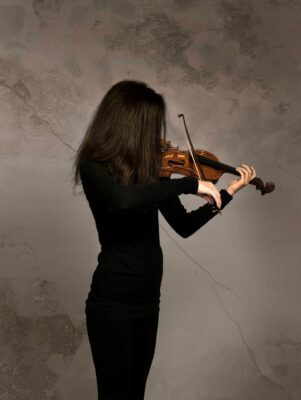
Do you love modern classical music and would you like something different this Easter? New European Ensemble traditionally plays the beautiful Stabat Mater by Arvo Pärt from 1985, this time in combination with the lively Stabat Mater from 1736 by Giovanni Battista Pergolesi. Combining past and present is the strength of this unique ensemble. After all, according to Stravinsky, tradition is not a relic of the past, but a living force that shapes and inspires the present.
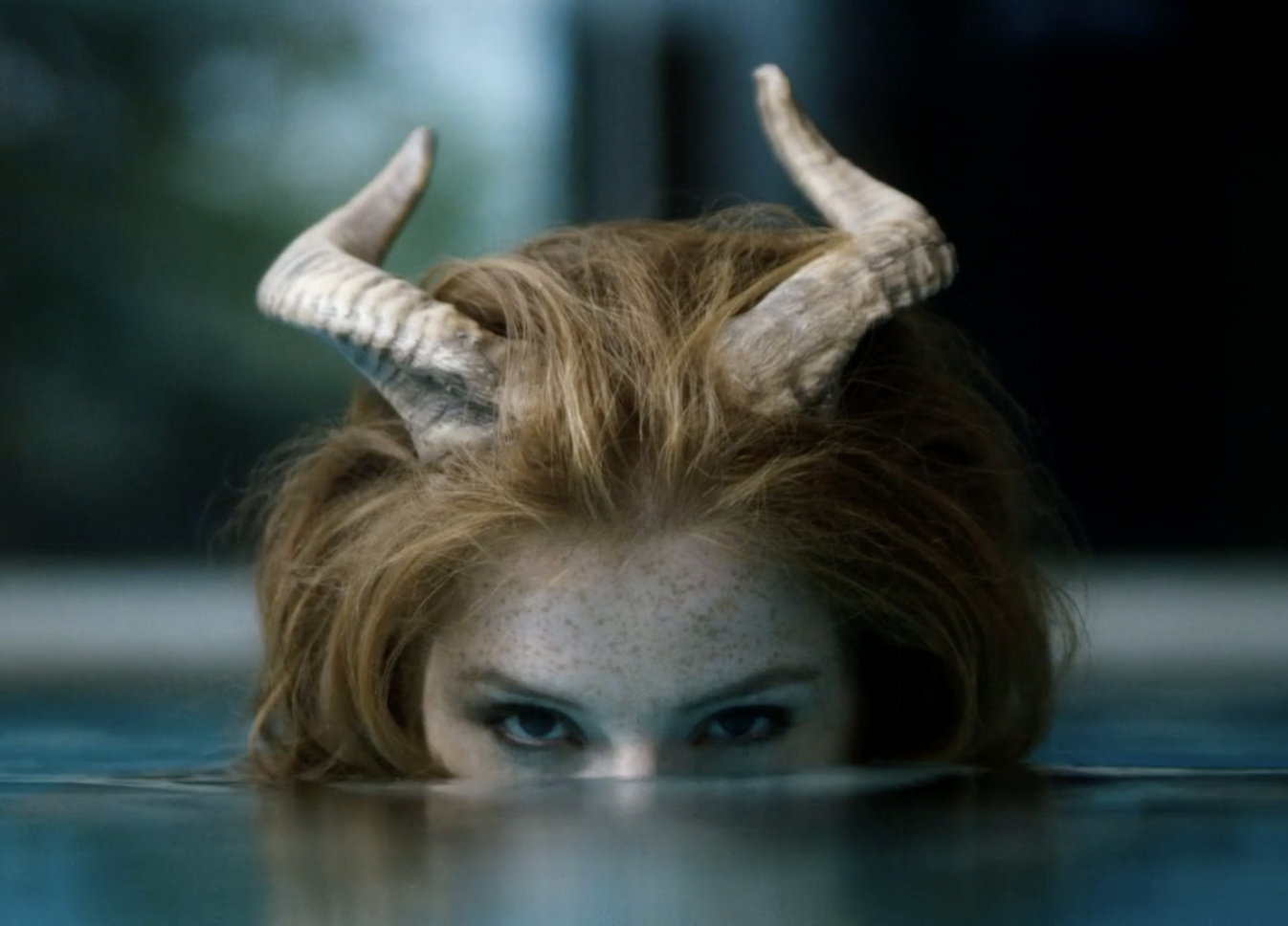
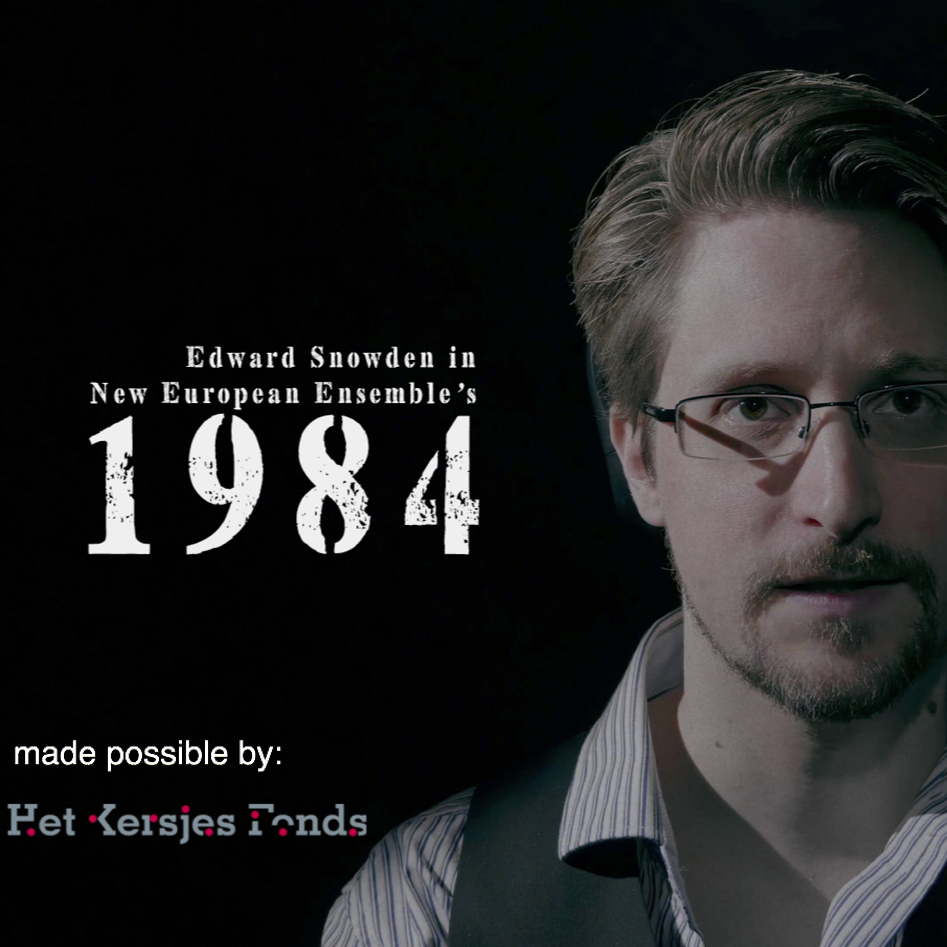
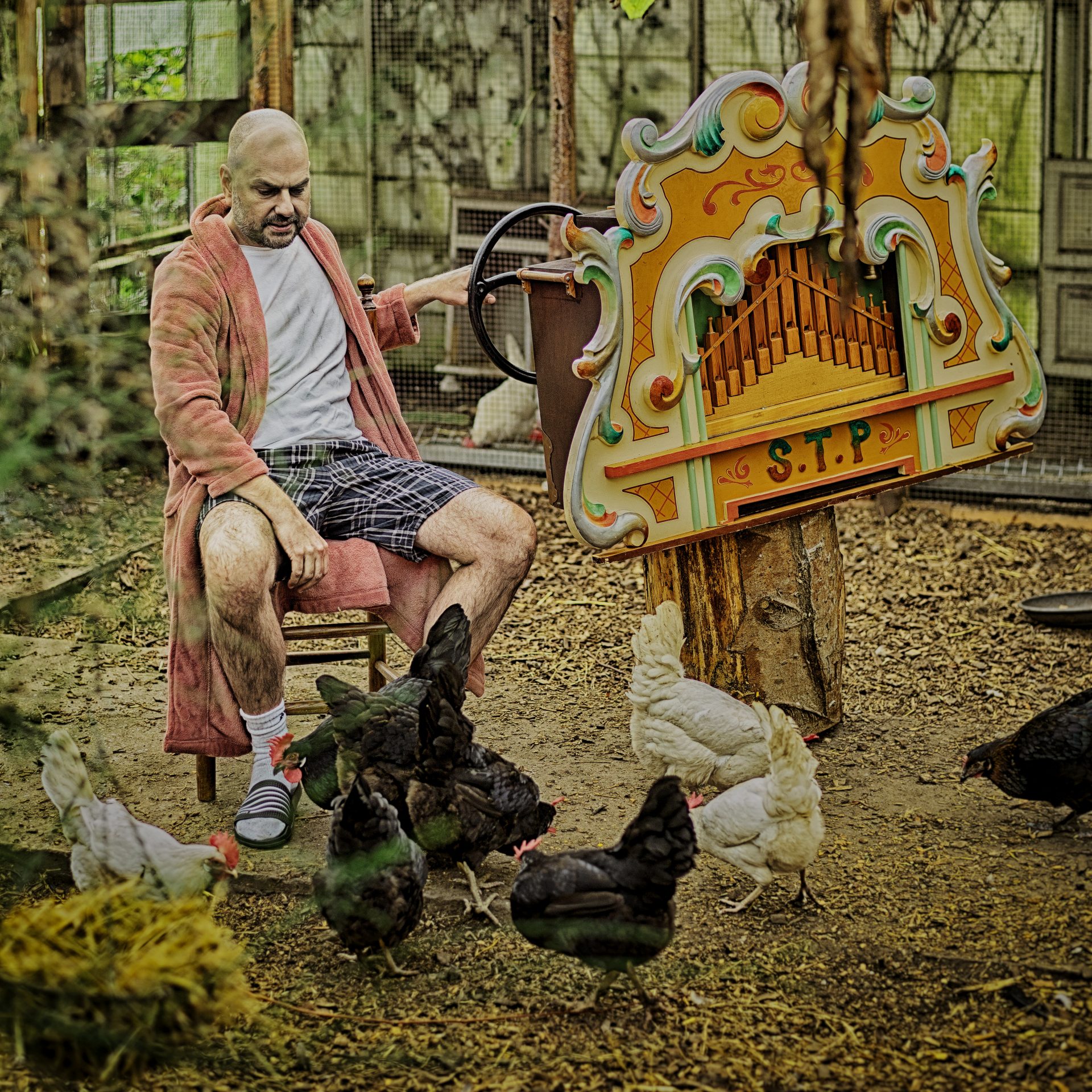
The Mad King, by OPERA2DAY and the New European Ensemble, is an immersive and colorful theater experience, in which a powerful man in isolation fights his delusions, a strange guest enters, astonishing sounds can be heard, and we can escape our seclusion for a while, corona proof – on the wings of art.
Surrounded by his wondrous bird collection, the man cranks up his barrel organ and becomes inspired by the sound and color of remarkable mechanical instruments: all meant to stifle the cackling voices in his head. But then a strange guest flies in. It is a migratory bird from Asia that takes up residence in one of the cages, thus posing a threat to the magnificent collection of songbirds. The beginning of a free fall, which forces him to face his fears, beliefs and habits.
The legendary “Eight Songs for a Mad King” by composer Peter Maxwell Davies have their roots in history. The ‘mad king’ is George III of England, the monarch who, in addition to the American colonies, also lost his mind. He used the tunes from a mechanical organ to teach his collection of bullfinches to sing. In 1969, Peter Maxwell Davies converted these melodies into a range of music styles that form a poignant theatrical account of madness and insanity. These crazy and outlandish songs are the ultimate challenge for a baritone, who has to use his voice from frighteningly high to heart-sagging low, performed with extreme expressiveness.
In The Mad King by OPERA2DAY and the New European Ensemble, the eight songs are heard amidst the isolated man’s fabulous fantasies. In these, the music of court composer Georg Frideric Handel plays a major role. The music from his operas and oratorios, also full of bird song and folk music, fits extremely wonderful into the universe of The Mad King.
Worth a special mention is the collaboration with Museum Speelklok – the specialist in the field of mechanical organs and musical instruments.
ARTISTIC TEAM
Concept and stage direction Stefano Simone Pintor
Music Peter Maxwell Davies, Georg Frideric Handel, Brendan Faegre
Libretto “Eight Songs for a Mad King” Julian Randolph Stowe, based on the writings of George III of Great Britain
Design of the musical universe Brendan Faegre
Musical direction Hernán Schvartzman
Artistic direction New European Ensemble Emlyn Stam
Scenography Herbert Janse
Light design Uri Rapaport
Sound design Arne Bock
Technical producer Ronald Tebra
Costume design Mirjam Pater
Hair and make-up Nienke Algra
CAST
Baritone Charles Johnston or Wiebe Pier Cnossen
Mime Bodine Sutorius
Ensemble Six musicians of the New European Ensemble (on stage)

